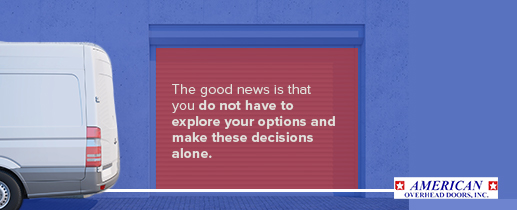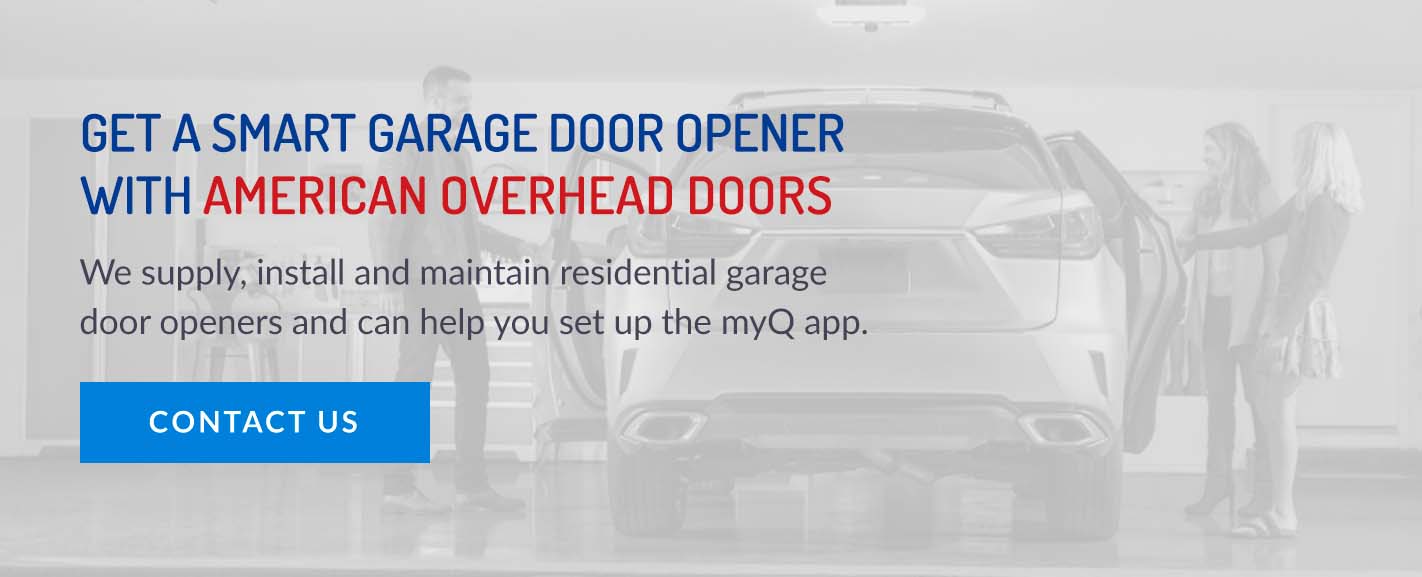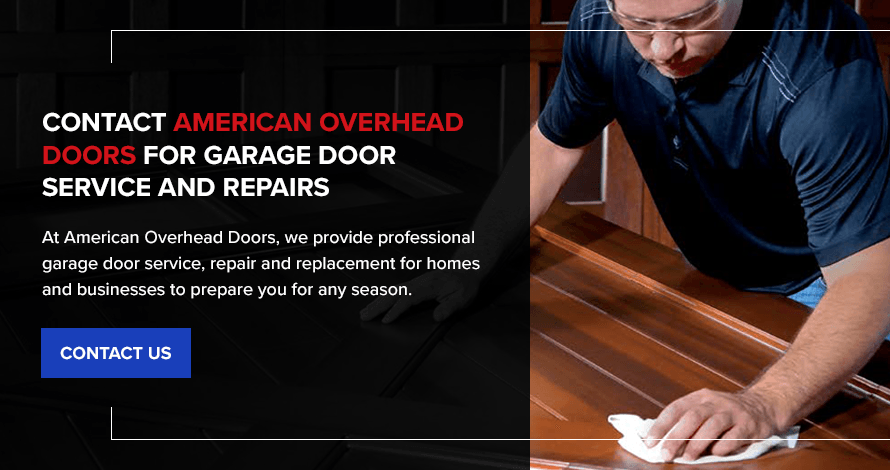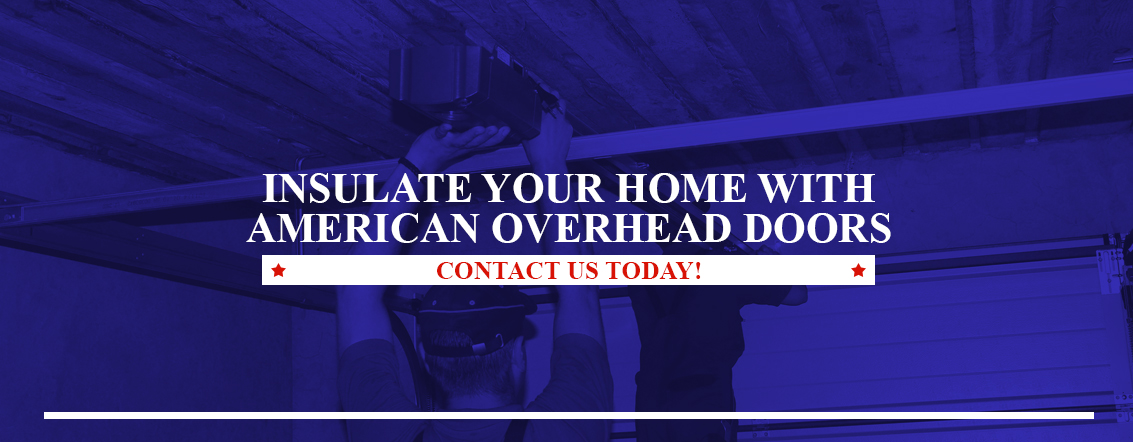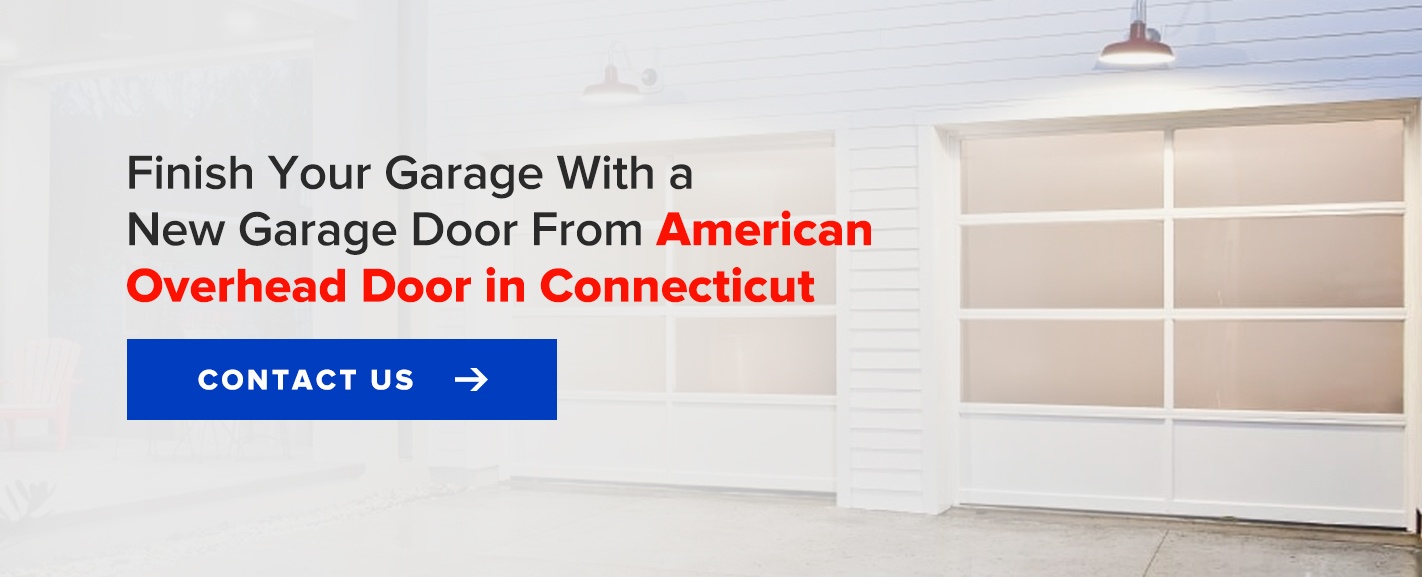Things to Consider When Buying a New Garage Door
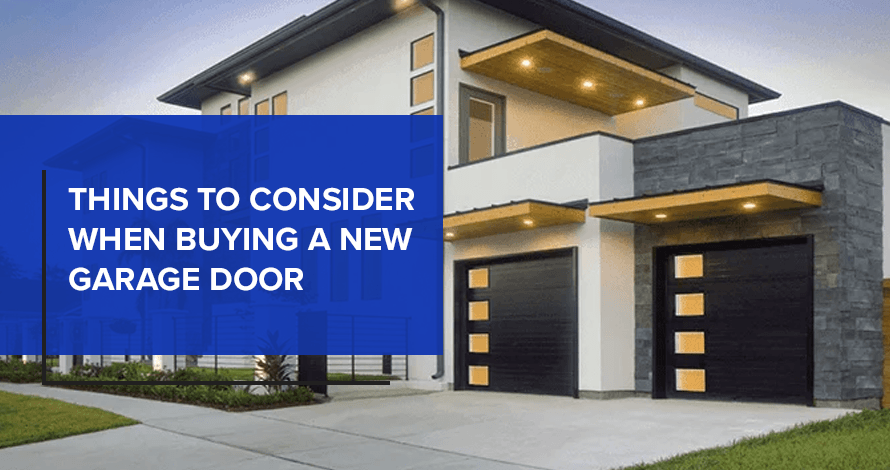
Residential garage doors are vital for security, functionality, convenience and curb appeal. An old or broken garage door can slow down your daily routine, making it more frustrating and stressful.
Though replacing your garage door involves some research, it doesn’t need to be overwhelming. We’ve designed this garage door buying guide to help you make the best decision for your home, so you can quickly find what you need.
5 Garage Door Buying Tips to Consider
You’ll quickly see how many outstanding options are available when you start comparing garage door features. However, that can make it challenging to narrow down your preferences!
Here are five garage door considerations to help you become a more informed customer.
- Appearance: Variables include your chosen materials, preferred color and the style that best matches your home.
- Sizing: Your garage door’s size will impact your overall cost and could be a factor in your material choice.
- Environment: If you have an insulated garage, you’ll likely want insulation on your garage door, too. The best option will depend on what you intend to use your garage for.
- Budget: It’s wise to decide your price range beforehand so you don’t overspend. Don’t forget to add the hardware and installation costs.
- Technology: How high-tech would you like your garage door to be? Many homeowners enjoy having remote openers, safety features and smart home integration. These technologies make your garage door more comfortable and convenient to use.
Now that you have a foundation to get started, let’s go deeper. Keep reading to learn more about prioritizing your preferences and finding the ideal garage door for your home.
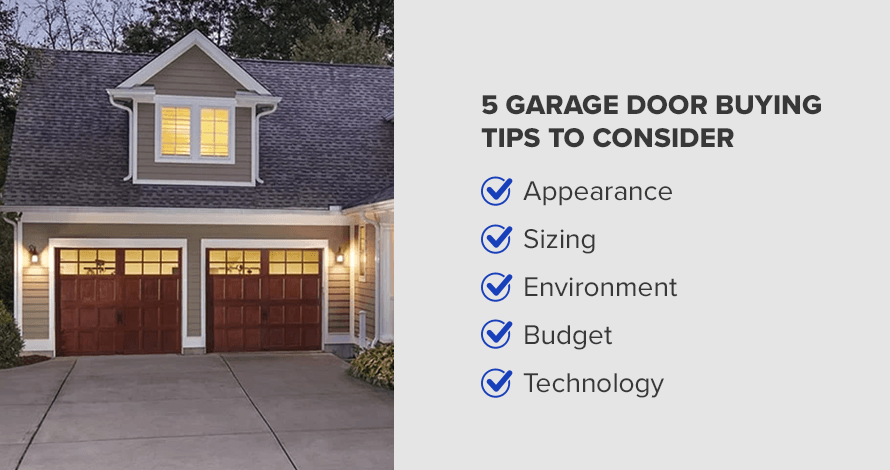
How to Buy a New Garage Door
Choosing a garage door requires many personal decisions, based on your goals, budget and style. To simplify the process, divide all the variables into two lists — needs and wants. You can quickly narrow down your best garage door choices by starting with needs.
Garage Door Needs
Here are some categories to consider for your needs list:
- Your budget
- The size of your garage door
- Insulation for your garage door
These items fit best in the needs list because they’re make-or-break decisions. When setting your budget, aim for a range that feels comfortable for you. You may need to research what costs are reasonable for a high-quality product.
Garage door size is also essential because it can impact affordability. A trailer-sized garage door will be much larger than a residential garage door for a one-car garage. Before you go shopping, measure your current garage door to get the correct dimensions.
An insulated door is only a must-have if the rest of your garage has insulation and an HVAC system. Pairing an insulated garage with an uninsulated door isn’t energy-efficient. However, an uninsulated door makes more sense if your garage isn’t insulated.
Garage Door Wants
Buying a garage door also involves gauging your preferences and looking for a model that meets as many needs and wants as possible. Multiple garage door customizations are available, so you can find the perfect fit for your home.
Here are some items to put on your wants list:
- The material you like
- The technology you’d prefer
- What style and color you’re interested in
Your chosen material will affect your home’s appearance, so you could consider it a need. However, we’ve put it on the wants list because everyone has different stylistic preferences. Many beautiful options at various prices can blend well with your home, including steel, wood and faux wood.
If you’re interested in additional security features, you can invest in technology to make your garage door safer and more convenient. Talk to your local dealer about remote openers and security systems.
Other garage door wants include your style and color preferences. Popular styles include farmhouse, contemporary, carriage house and traditional. Each blends well with a range of homes, so you can choose what best reflects your taste.
Maintenance Tips When Buying a Garage Door
Maintenance is another essential feature to consider when buying a new garage door. While many homeowners prefer the DIY route, leaving some tasks to a professional is better for safety reasons.
You must understand your purchase’s maintenance needs when shopping for a new garage door. For example, a wood garage door will need refinishing several times during its life span. That’s straightforward enough to do yourself if you’re handy around the home, or you can hire a professional.
Other upkeep includes replacing functional garage door components like torsion springs. If you purchase heavy-duty parts, they will last longer and require less maintenance. However, when it’s time to replace them, you must hire an experienced technician to do the job safely.
How to Choose the Best Garage Door Material
There are several considerations when choosing your garage door material, including your stylistic preferences and budget.
Different garage door styles lend themselves well to various materials. For example, carriage house and farmhouse garage doors are traditionally wood. In contrast, modern and contemporary garage doors are typically steel. This material’s sleek, minimalist appearance creates the perfect backdrop for modern homes. Steel comes in many colors, and you can add texture with different panels.
Another option is to purchase faux wood — a steel door with a wood texture or overlay. This material bridges the gap for homeowners who prefer the wood aesthetic but are working with a lower budget. Regardless of your material preference, you can find the perfect color choice and style option for your home.
Request an Estimate From American Overhead Doors
American Overhead Doors is a family-owned business in Connecticut. We serve families and businesses across the Constitution State, helping them get the ideal garage doors for their needs. We’re the state’s only Clopay® Master Authorized Dealer®, and we’re proud to offer such high-quality products to our customers.
When you work with us, you can always count on stellar customer service, personalized support and professional communication. We offer an industry-leading two-year labor warranty on every garage door installation and can also advise you on garage door selection and repair.
Contact us today for a free estimate and to learn how we can serve your garage door needs!
How to Measure for a New Garage Door
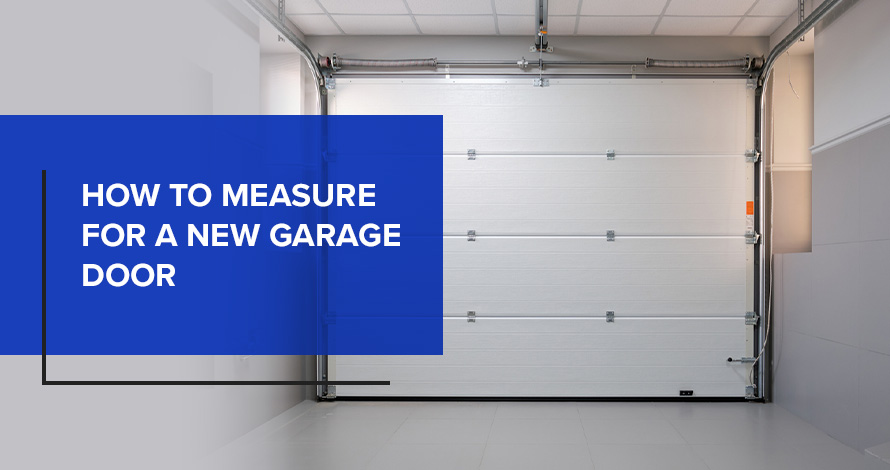
If you need to choose a new entryway, it’s vital to understand how to measure a garage door for replacement. Accurate measurements ensure your doors will fit as expected and help contractors give you a more precise estimate for your new residential or commercial garage door.
Garage Door Measuring Guide
Follow these steps when it’s time to replace or upgrade your doors.
1. Capture the Entry’s Width
Measure the widest point of your door’s opening. You should also check your door jambs to ensure they’re in good condition, squared and defect-free.
2. Measure the Opening’s Height
Find the highest point between the opening and the floor and note its distance. Inspect the floor for any damage or areas that aren’t level.
3. Get the Sideroom Measurements
Measure to the left and right of the door’s opening from the mouth to the nearest wall or obstacle. You’ll need about 4 to 5 inches on each side for mounting the vertical tracks. The center post should offer a minimum of 10 inches of width for two-door installations.
4. Find the Headroom Clearance
Record the distance from the top of the door’s opening to either the nearest obstruction or the ceiling. For most doors, you’ll want at least 15 inches.
5. Capture the Backroom Clearance
Measure the distance between the door’s opening and the back wall or nearest obstacle, such as a lighting fixture. For a sectional-style residential door, you’ll need a minimum of the door’s height plus 18 inches for a manually operated door. When using an overhead opener instead, add 50 inches to the door’s height to find the minimum clearance requirement.
Special Considerations for Commercial Doors
Clearance requirements for commercial models vary significantly based on the door’s style and height. Generally speaking, you’ll need:
- Backroom width equal to headroom space for coiling doors.
- Backroom equal to the door’s height plus 23 inches for a 2-inch track or 25 inches for a 3-inch track — and more if you install an overhead operator.
- Clearance of 4 to 6 inches per side for a manually operated door.
- Clearance of 5.25 to 9.5 inches per side for doors operated by a chain hoist.
- Clearance of 14 to 18 inches on at least one side for motor-operated models.
Request an Estimate From American Overhead Doors, Inc.
American Overhead Doors, Inc. is a family-owned company with over 30 years of industry experience, five-star reviews and customer praise. Our well-qualified team can help you with professional garage door replacement, residential door repair services and commercial repairs.
Take the next step and request a custom estimate today, or call us at 860-347-1507 for personal assistance.
Reasons to Buy an Insulated Garage Door in Connecticut
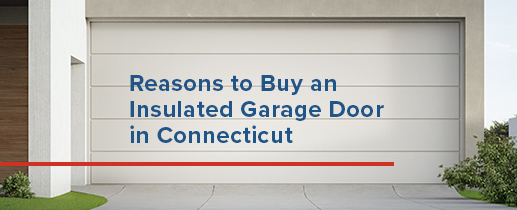
An important part of many residences that homeowners often overlook or put off tending to is their garage. As garage doors cover the home’s largest doorway, it is important for you to make any necessary repairs or upgrades to keep your garage functional, economical and comfortable. One of the many ways to do this is to invest in an insulated garage door.
Insulated garage doors are especially important if you live in an area like Connecticut, where the weather is often fickle and unpredictable. Having an insulating garage door is beneficial for many reasons, as it can increase the overall efficiency and temperature control of your home. If you have been putting off making garage door upgrades, whether it be for financial or aesthetic reasons, you should consider making these changes now before the weather turns cold and you feel the effects of a non-insulated garage door in your home.
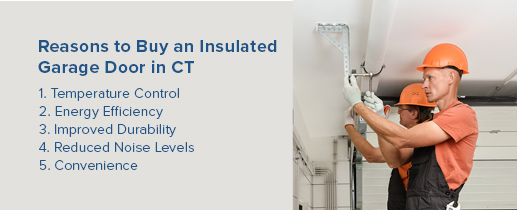
What You Need to Know About Garage Door Insulation
If you live in a home with a non-insulated garage door, you may not yet have upgraded because you do not know the extent of an insulated garage door’s benefits. Or maybe you do not know what information you need to understand when deciding which garage door is best for you home. Two important factors to consider when getting an insulated garage door are its R-value and U-factor.
R-Value
The first thing you should look at when deciding on an insulated garage door is the insulation’s R-value, or the measure of the insulation’s thermal resistance per unit area. More effective insulation has a higher R-value, as the material is more resistant to conductive heat flow. The R-value of insulation depends on many factors, including the type of insulation, its density, its thickness and the number of individual layers of insulation.
More simply, the R-value represents the insulation’s ability to slow the transmission of heat. Better insulation has a higher R-value because it has a slower transfer of heat. This means that if you choose an insulated garage door with a higher R-value, it will slow the heat that leaves your house in the winter and allow the summer heat in at a slower rate.
You can determine your insulation needs by looking at the energy efficiency codes directed by the International Code Council (ICC). The entire state of Connecticut falls into Climate Zone Five A, meaning that it has a minimum average temperature between -15° and -20°F. Based on the attributes of the fifth zone, the ICC recommends a ceiling R-value of at least 37 and a wall R-value of 13-20, depending on the wall’s material makeup. Based on this information, in Connecticut, your garage door should have an R-value of at least 14 and 16 for garage spaces commonly used or sharing walls with primary living spaces.
Different garage doors have a wide range of R-values, so knowing what you need for your home will help narrow down the decision on what garage door will benefit you and your home the most.
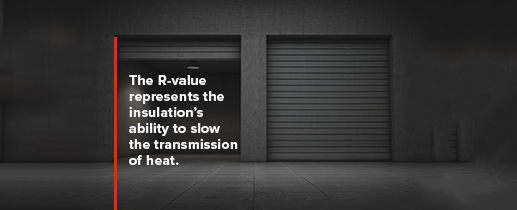
U-Factor
Another factor to consider when choosing a garage door is its overall ability to transfer heat. Called the U-factor, this measures how much heat transfer occurs through the entire door, whereas the R-value only defines the heat flow capabilities of the insulation. Materials with lower U-factors insulate better, making them more energy-efficient than ones with higher U-factors.
U-factor measurements can be more accurate than R-values because while R-values look at the heat loss of insulation, U-factors account for the door as a whole, including frames, panels and other hardware. When selecting a new garage door with more energy efficiency, look for a garage door that advertises a lower U-factor to find a door that can help keep the heat in your home in the winter and the sun out in the summer.
Reasons to Buy an Insulated Garage Door in CT
Connecticut is a beautiful place to live, but the constantly changing and and often severe weather can sometimes make it difficult to keep your home as effective and comfortable as it should be. One way to avoid being unprepared for the weather is to get your house ready with an insulated garage door. Some reasons to consider this option include:
1. Temperature Control
If your home has an attached garage, this means that the garage is part of your home and shares at least one wall with your living space. As the garage door is most likely the largest entryway into your home, it is important to ensure that this is a well-insulated point to lessen heat transfer.
When you have your house’s heating system on in the wintertime, it works to heat your home to your desired temperature. If your attached garage does not have proper insulation, you lose some of the warmth that your heating system provides. The same is true for air conditioning in the summer. As your air conditioning works to produce cooler air in your home, a garage without proper insulation will allow some of the cold air to escape.
While you may think that a little heat transfer from your garage may not make too big of a difference, it might surprise you how much your garage can affect the heating and cooling of your home. In fact, data from the Clopay engineering department reveals that in the situation where it is 20 degrees outside, if you have a non-insulated garage door, the temperature of your garage will be around 30 degrees. Contrarily, if you have an insulated garage door, the temperature of your garage stays closer to 42 degrees. An insulated garage door makes a big difference in keeping your home comfortable and your energy use efficient.
2. Energy Efficiency
Relating to the idea of temperature control is the energy efficiency of your garage door. If you have your heat or air conditioning on but the hot or cold air escapes through the garage, your heating or cooling system has to work harder to compensate for the lost air. This makes it harder for your heating and cooling system to regulate temperature, thus making it do more work. Since your heating and cooling system has to work harder to maintain your home’s desired temperatures, this increases the cost of your energy bill, not to mention the wear and tear on the HVAC system. Therefore, investing in a garage door with proper insulation now can help your home be more energy-efficient, saving you money in the future.
3. Improved Durability
From the daily use of raising and lowering your garage door to the occasional storm damage or weather wear, your garage door will probably get some marks and dents over time. Although the everyday wear and tear of your garage door is a common and expected thing, there are still ways to help improve the durability of your garage door.
One of the best ways to ensure that you have a stronger and more durable garage door is by getting a door with insulation. Insulation adds an extra layer to your door, giving it more rigidity and enhanced durability. Whether you choose a garage door insulated by a solid panel of insulation between two layers of steel or aluminum, or a garage door with foam that expands and hardens to fill the gaps between the two metal panels, both insulation techniques work to strengthen your garage door.
Another aspect of your garage door that insulation works to protect is the internal hardware. Extreme temperatures can affect important parts of your garage door’s internal system, such as the springs, wires, cables, brackets and rollers. It is important to have a garage door with high-quality insulation to prevent any breakage or erosion of these parts, as they are what keep the garage door functional and safe.
4. Reduced Noise Levels
If you live in a home with people on different work and sleep schedules, you may worry about waking everyone up with the sound of your garage door opening and closing. While you can expect any mechanical system to make some noise because of its moving parts, your garage door should not make excessive noise. If you check the internal hardware of the door and do not find any specific problem causing the noise, the culprit may just be the door itself.
Lightweight, non-insulated garage doors tend to shake and rattle more than their heavier, insulated counterparts. If you have a non-insulated garage door, its panels may shake as it moves along the track, whereas an insulated garage door that is thicker with a tight construction may have less hollow space or loose materials, which can limit the noise your garage door makes when in motion. Also, insulation can act as a buffer that absorbs vibrations and noises, muffling some of the sounds the garage door may cause.
For similar reasons, insulated garage doors can also help lessen the noise getting through the door from the outside. An insulated garage door can help dampen the noise of anything from a loud storm outside to your neighbor’s lawnmower. While insulation will not dissolve all the noise pollution that gets into your home, it definitely can muffle outside sounds, making them more muted than without insulation.
5. Convenience
Another reason to get an insulated garage door is that it can help boost your overall convenience and comfort within your home. One of the many perks of an insulated garage door is that because it keeps the warm air from your home in the garage, leaving your home in the winter can be more comfortable. If you keep your car in the garage, an insulated garage door makes it so you do not have to step outside in the cold weather, increasing the convenience of your garage, especially when bringing in groceries or buckling kids into their car seats.
Similarly, with the air in your garage staying warmer than it would without an insulated garage door, you avoid letting the cold outdoor temperatures blow into your home. Your garage acts as a vestibule or buffer zone between the temperature-regulated space of the home and the outdoor elements. This lessens the effect the outdoor air has on your living space.
Also, if you and your family use the garage as an extension of your living space or if someone in your home likes to work in the garage, having an insulated garage door makes temperature control of the garage much more convenient. If you decide to go to your garage and work on a project, doing so with a non-insulated door will have much more extreme temperatures in the garage. For example, some insulated garage doors can keep a garage between 10 and 20 degrees cooler or warmer than the outside temperature.
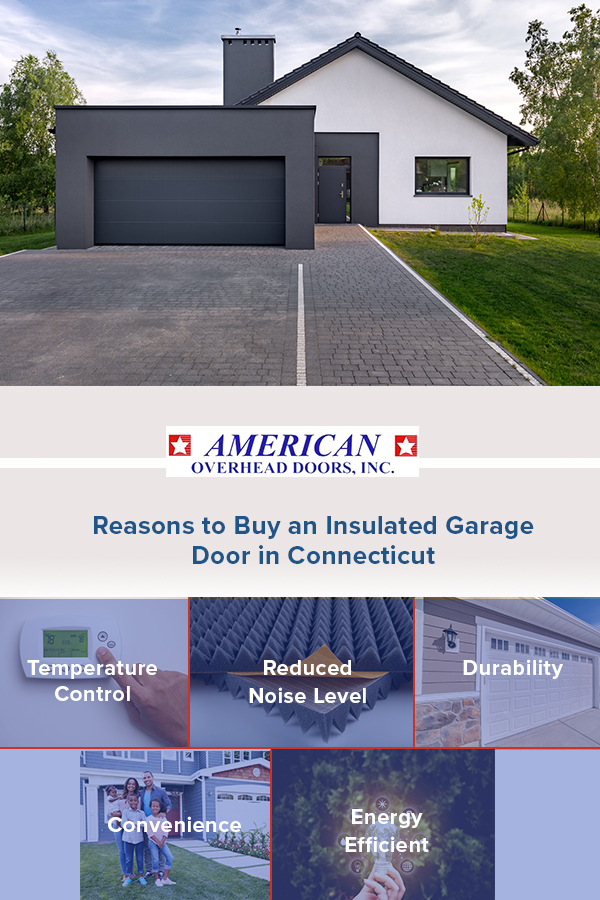
Find an Insulated Garage Door with American Overhead Doors
When facing change, it is reasonable to be hesitant, researching all possible options before deciding on what may be best for you. Regarding choosing a new garage door, there are a lot of things to consider, such as budget, style, brand and installation. The good news is that you do not have to explore your options and make these decisions alone.
If you want to replace your garage door and upgrade to an energy-efficient and stylish one that meets the needs of your home, come to American Overhead Doors, Inc. We have a wide variety of Clopay garage doors that will give your home eye-catching curb appeal while also helping increase your home’s energy efficiency.
From Coachman style doors to classic steel, custom wood to limited-edition styles, we offer a wide selection of doors of different styles, colors and materials. We can help you find the perfect door that will meet your garage door wants and needs. Because Clopay doors have a great balance of looks and functionality, whatever you need in a new garage door, American Overhead Doors will help you find the perfect fit for you.
Contact Us Today
At American Overhead Doors, we are a family-owned company that has served Connecticut customers since 1987. Holding the privileged status of being the only Clopay-Master Authorized Dealer in the state, we pride ourselves on our level of expertise and responsiveness in sales, installation and service, on top of our dedication to our customers.
If you are ready to start shopping for your next garage door, contact us at American Overhead Doors today by giving us a call at 860-347-1507 or filling out our online contact form. Also, do not hesitate to stop in our showroom, where we have 16 doors and 6 automatic openers on display, a wide variety of material samples and brochures sure to give you some creative inspiration!
Benefits of MyQ Technology
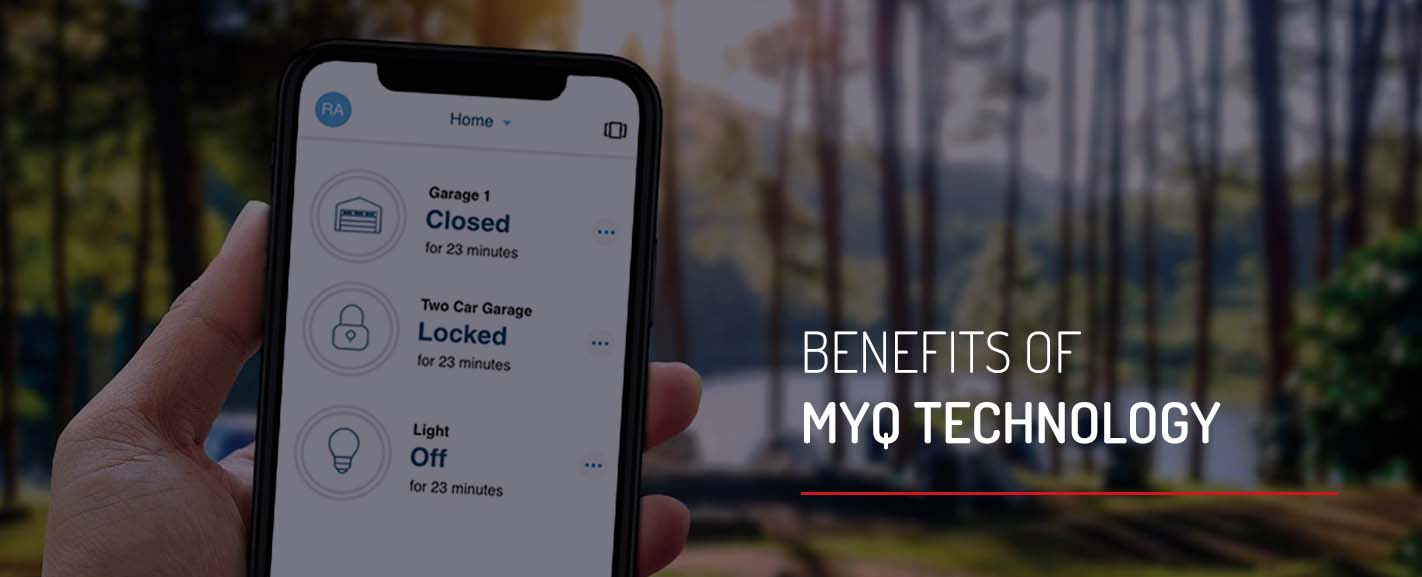
An automatic garage door opener makes it easy to operate your garage door without keys or even getting out of your car. If you haven’t changed your garage door opener in a while, you may be in the market for a new one. In the past, these devices simply opened and closed your garage door. Modern garage door openers have some exciting new features, such as Wi-Fi access and connectivity to LiftMaster’s MyQ technology.
Having a smart garage door opener provides many benefits to your house by making it more safe, secure and convenient. MyQ technology allows you to operate your garage door opener from anywhere in the world. All you need is a smartphone or another mobile device to connect to your garage door opener and the LiftMaster MyQ app. Explore some of the benefits of a Wi-Fi garage door opener to know how myQ technology can add value to your home.
What Is MyQ Technology?
LiftMaster MyQ is the technology created by the Chamberlain Group that connects your garage door opener to your smartphone through cloud-based software. You can monitor or operate your garage door from anywhere you have a Wi-Fi connection, whether you’re at home or on vacation. Even though a new garage door opener typically has Wi-Fi capabilities, you can also configure your existing opener with the Chamberlain® Smart Garage™ Control. Consult your local garage door technician about the best option for your property.
With the myQ app, you can:
- Connect your Wi-Fi garage door opener with smart devices and platforms, such as Google Assistant and Amazon Alexa.
- Receive real-time notifications from your garage door opener.
- Operate your garage door from your smartphone or another mobile device.
- Create recurring schedules to have your garage door and lights operate at certain times of the day.
This program works by connecting to your garage door opener and the photo-eye sensors through your home’s Wi-Fi connection. You can have the myQ system installed by a professional garage door technician. After you have your wireless garage door opener installed, you can use the cloud-based app to monitor your garage door and operate it accordingly.
What Are the Benefits of Liftmaster MyQ?
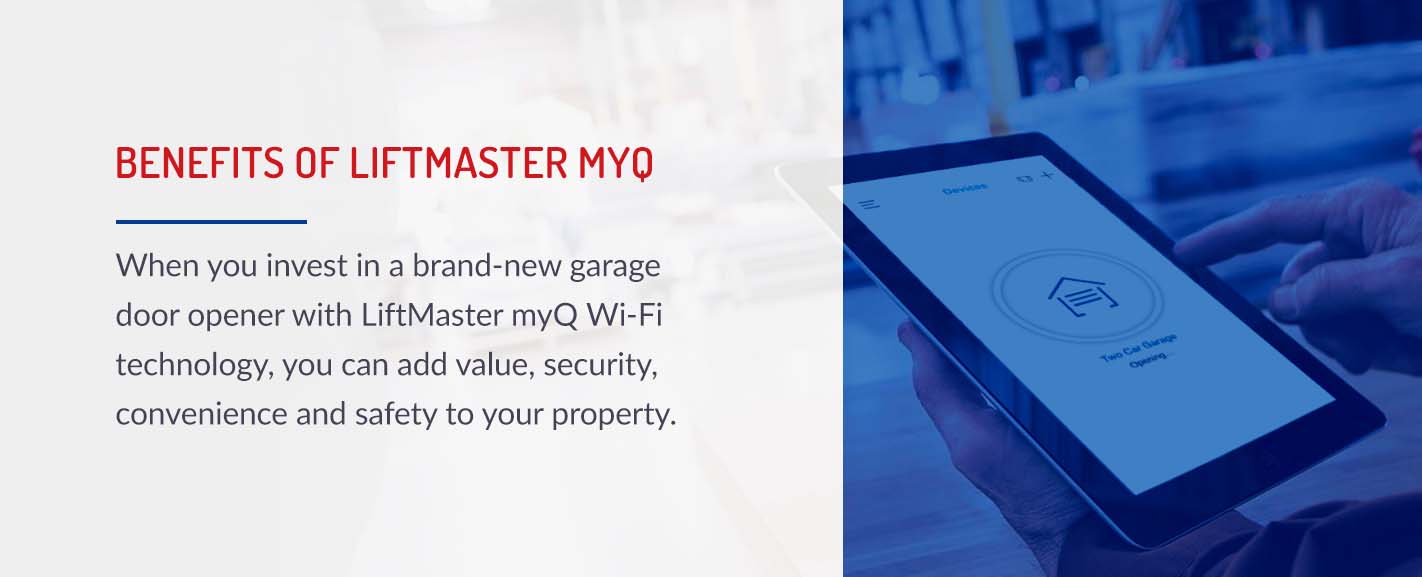
When you invest in a brand-new garage door opener with LiftMaster myQ Wi-Fi technology, you can add value, security, convenience and safety to your property. Explore the ways that having myQ technology in your home can make your daily life easier.
1. Monitor Your Garage Door From Anywhere in the World
MyQ technology gives you access to up to two garage doors and 16 myQ-enabled accessories from wherever you are, whether you’re on vacation in another country or down the block from your property. Instead of waiting until you’re at home, you can open or close your garage door while you’re in the car coming or going from your errands. The myQ app also allows you to monitor your garage door’s activity and operate it as necessary to give you peace of mind throughout the day.
If you spend all day wondering about whether you closed your garage door, you’ll be distracted from work or errands. Your myQ-enabled garage door opener helps you stay focused in the following ways:
- Receive real-time notifications about your garage door’s activity: The myQ app alerts you through your smartphone when your garage door opens and closes, or when your garage door opener’s lights turn on or off. That way, you know when your kids arrive at home or when someone tries to enter your property without your permission. You can even customize the notifications you receive.
- Check on your garage door anywhere, anytime: With the myQ app on your smartphone connected to your Wi-Fi-enabled garage door, you can always make sure that your garage door is closed and secure. As you leave your house in the morning, you may have the nagging feeling that you left your garage door open. You can check your garage door wherever you are, so you can have peace of mind and be present at work or on vacation.
- Close your open garage door from where you are: If you happen to leave it open, you can close it with the tap of your phone screen. Then you can go back to whatever you were doing, whether you were working on an important project at work or cheering your child on during a soccer game. You also don’t have to rush home if you’re stuck in traffic, so you can drive safely and be attentive to the road.
2. Have an Additional Layer of Security for Your Home
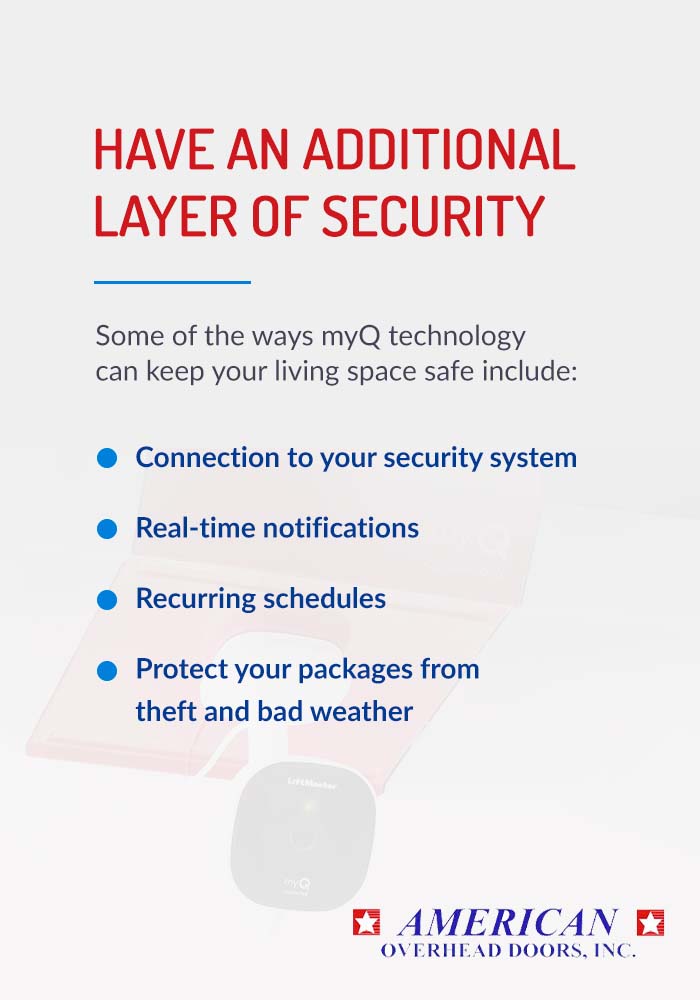
You may have a security system in your house that protects your loved ones and valuables from theft. MyQ technology is another way for you to make your property even safer. You may have property in another part of the world during the cold months, and you’d need to keep your primary residence safe while you’re traveling. Some of the ways myQ technology can keep your living space safe include:
- Connection to your security system: Smart myQ-enabled garage door openers are compatible with your security system, whether you have Vivint, Alarm.com, Ring, Apple® HomeKit™, Resideo, Clare or IFTTT. If your older children are home alone, you can keep them safe by monitoring your garage door activity at all times. Your security system can also alert the authorities if your garage door is opened without your permission.
- Real-time notifications: Since you can get alerts to let you know when your garage door opens, you can take the appropriate actions to deal with intruders who you didn’t want in your house. It can also make sure your home is safe while you’re on vacation, which usually attracts intruders.
- Recurring schedules: If you’re ever on vacation or out of the house at night, it’s helpful to have the lights on in front so your neighbors think that someone’s home. Intruders may try to break into people’s properties when it’s dark because they know that no one will see them. You can prevent theft by setting up a schedule for your garage door or lights. When the lights turn on at a reasonable time at night, people might still think you’re home.
- Protect your packages from theft and bad weather: When your packages are on the doorstep, they’re vulnerable to damage and theft. Amazon Key works exclusively with myQ technology to allow Amazon delivery personnel to take your packages safely into your garage instead of leaving them in front of your house. You can open the door for the delivery person and close it after they leave. If you have a myQ-connected garage door camera, you can also make sure they get into your garage safely.
Besides your myQ-enabled garage door opener, you can also get myQ security cameras and locks installed on your garage door. Consult your local garage door technician to find out what security options are available for your property.
3. Make Your Home Safer for You and Your Loved Ones
Since your garage door is the largest opening into your home, you need to make sure it can safely guard your family and valuables. MyQ technology can help reduce the risk of injury or damage in the following ways:
- Alerts and notifications: Smart garage door openers will have a beep alert and flash the lights to let you know the garage door is operating, so anyone who’s home can be aware that someone else is entering the house. You and your loved ones will also know if someone is trying to get into your home without your permission. With real-time notifications, you can know about any activity in your house and get the necessary help immediately.
- Automatic closure: An open garage door can let intruders, harsh weather conditions and pests into your living space. You can set up a time when your garage door will automatically close, in case you or the kids forget to close it, to keep the inside of your home safe.
- Lighting control: Instead of fishing for your keys or navigating your front lawn without lighting, you can see your way around your property with lighting control. Besides controlling your lights to prevent people from breaking in, you can also set up your smartphone to connect to your garage door opener lighting so you can safely enter the garage after being out late after dark.
4. Get Started Right Away With the Simple Setup
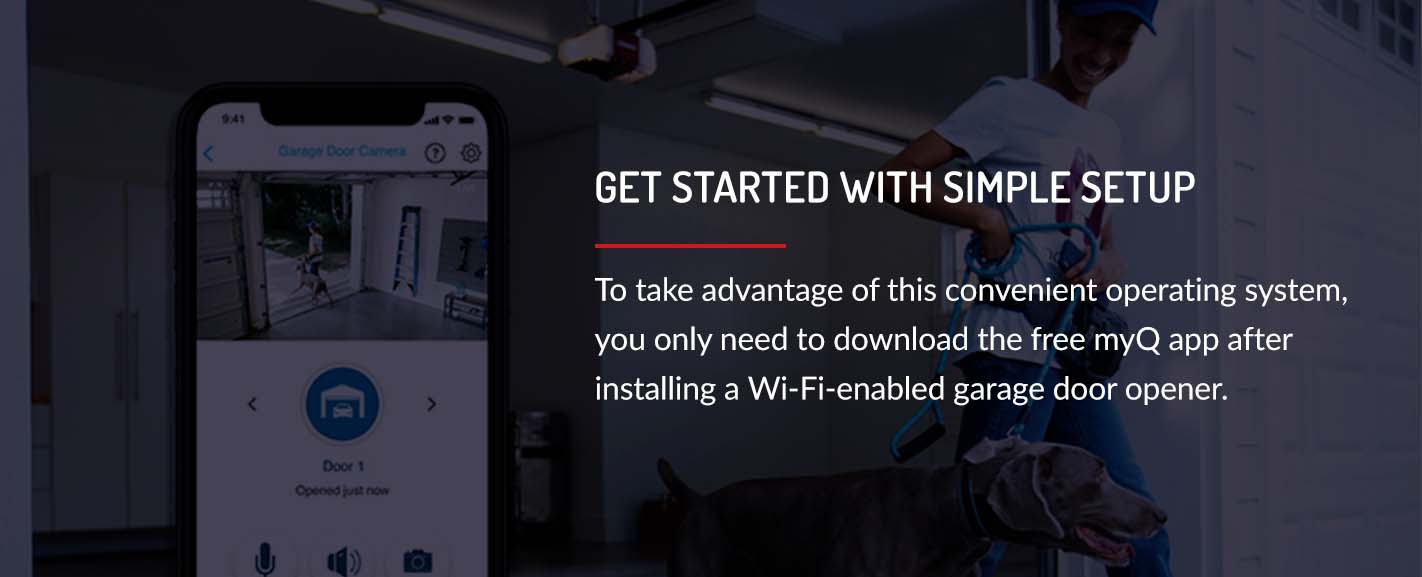
MyQ-enabled garage door openers feature simple-to-use and advanced operating systems to monitor and control your garage door from your computer, smartphone or tablet. To take advantage of this convenient operating system, you only need to download the free myQ app after installing a Wi-Fi-enabled garage door opener. Once you first install the myQ operating system, there are no subscription fees or service charges.
Chamberlain® Smart Garage™ Control allows you to use myQ technology with your existing garage door opener, making setup even more convenient. Keep in mind that it’s best to invest in a new garage door opener, especially if yours is old or damaged. If you’re getting a new garage door, you should consider upgrading your garage door opener to handle your door’s weight and style. The myQ app works best with Wi-Fi garage door openers.
5. Conveniently Access Your Home Through a Mobile Device
Connecting your garage door to your smartphone allows you to open and close it anywhere, anytime. In the past, homeowners would have to be home for deliveries or services to let people inside. Accessing your garage door from a mobile device comes in handy when you have to:
- Let expected guests into your home: With the myQ app, you can let people inside while you’re on vacation or at work. All you have to do is open and close the door with a tap on the screen. If you don’t want to have your door automatically open during a scheduled time, have them call you when they arrive, and you can “buzz them in” by opening the door for them.
- Bring your kids home inside safely: Maybe your kids forgot their keys and they need to get into your house after school. Instead of leaving a spare key outside your house or leaving work early, you can schedule a time for the garage door to open so you can conveniently let them inside. You may also want to open it for them through your smartphone.
- Access your garage door from your vehicle: Besides connecting to your garage door from your phone or mobile device, you can also operate it from your vehicle. When your myQ garage door opener connects to your vehicle, you can safely access your door without using your hands. It also uses geofence technology to alert your garage door opener of when you’re close to home, so it can open and close automatically when you arrive or depart. You can also get in-car notifications like you would on your phone.
- Share entry codes with others: Instead of copying keys and handing them out to people who need to get into your house, you can set up access codes for them. The myQ app allows you to share limited control over your garage door opener with up to five users. Send them a user invite and set up their guest profiles on the myQ app. You can manage how and when they can get inside, allowing you to remain in full control of your property.
6. Connect Your Garage Door Opener to Other Smart Devices in Your Home
The makers of myQ have partnered with many of the smart home brands and platforms that you’re probably already using in your living space. Whether you want hands-free control or voice activation with your garage door opener, you can easily make your house “smarter” with myQ technology. You can also get notifications about your garage door from your other smart devices, so you don’t have to have your phone nearby.
The myQ app is compatible with Google Assistant and other artificial-intelligence-powered virtual assistants, such as Amazon Alexa or Apple® HomeKit™. With this exciting feature, you can open and close your garage door with your voice. Instead of being limited to your smartphone, you can also access your garage door through your smart speakers, such as Google Home or the Amazon Echo. As long as your smart device can hear you, you can open, close or check on your garage door.
Get a Smart Garage Door Opener With American Overhead Doors, Inc.
If you want to take advantage of all the benefits of a Wi-Fi garage door opener with LiftMaster MyQ technology, reach out to our team at American Overhead Doors, Inc. We supply, install and maintain residential garage door openers and can help you set up the myQ app. You may also decide that it’s time for you to get a new garage door for your home to change up its look or make the entrance even more convenient.
Besides installing your garage door opener, we’ll also help you maintain and repair your garage door opener so it continues to work for many years. You can request an estimate online or contact us for more information about our garage door products and services. You can also visit our showroom in Middletown, Connecticut to see our garage doors and openers in person.
Preparing Your Garage Door for Winter
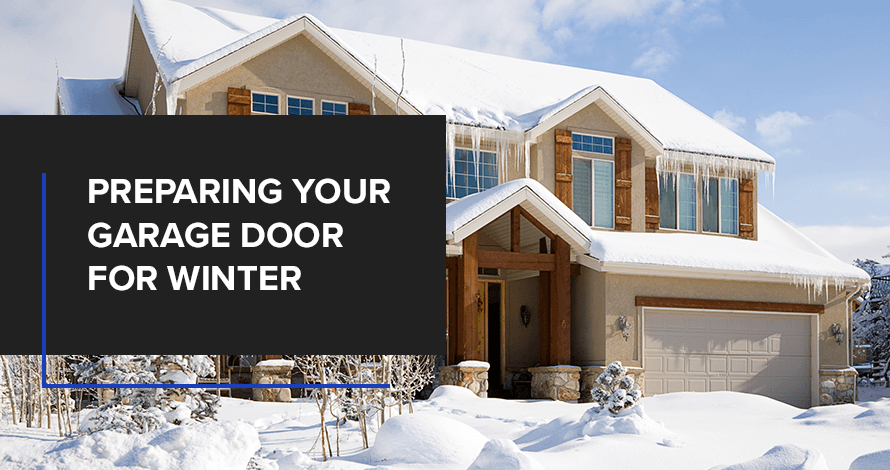
Your garage door is likely the largest functional appliance of your home or business. It withstands heavy use as you might open and close it thousands of times each year and multiple times a day. It’s exposed to the elements of each season, sustaining a great deal of wear and tear. The cold winter weather in a state like Connecticut can be unforgiving, so it’s important to prepare your garage for winter.
There are several precautions you can take before temperatures start to dip. Investing in these precautions can help prevent emergencies and reduce repair costs long term. Many precautions are quick and inexpensive, but have a significant impact. Learn how to seal your garage door for winter and discover other steps you can take below.
Schedule a Maintenance Appointment
How Does Cold Weather Affect Garage Doors?
Extreme cold and exposure to snow, sleet and ice can have an adverse effect on any appliance or piece of machinery. Your garage door is not immune to these impacts. It has several elements that are sensitive to the effects of winter. Though garage doors can be many different materials, none can withstand winter without any preparation. Here are some common garage door issues in cold weather:
- Shrinking metal: Particles move slower and take up less space when chilled. As a result, the cold causes metal to contract. Pieces of hardware like springs and screws will shrink. When this happens, your door might not be able to open and close. Springs can snap, and the metal track can warp. Proper weatherstripping, insulation and lubricating oil can minimize the effects of contracting metal.
- Allowing cold in: A lack of proper insulation allows the cold to seep in, which can affect the temperature of your living or working space. This can drive up your energy bills and make your indoor space less comfortable. Insulation and weatherstripping also help solve this problem.
- Absorbing water: As snow and sleet fall, parts of your garage door might absorb water, causing swelling. The swelling might prohibit closing. If the absorbed water freezes, the door could freeze shut. Doors with wooden panels are the most susceptible to this issue, and protective treatments can prevent this from happening.
- Fogging sensors: The safety sensor on your garage door keeps it from closing if it perceives an obstacle in the way. Winter weather can cause the sensors to fog over, mimicking an obstacle. Piled up snow or ice near the bottom of the door can have the same effect.
- Getting stuck: Any of the above issues can cause your garage door to get “stuck” and be unable to open or close. Precautionary measures protect your garage and prevent the door from sticking.
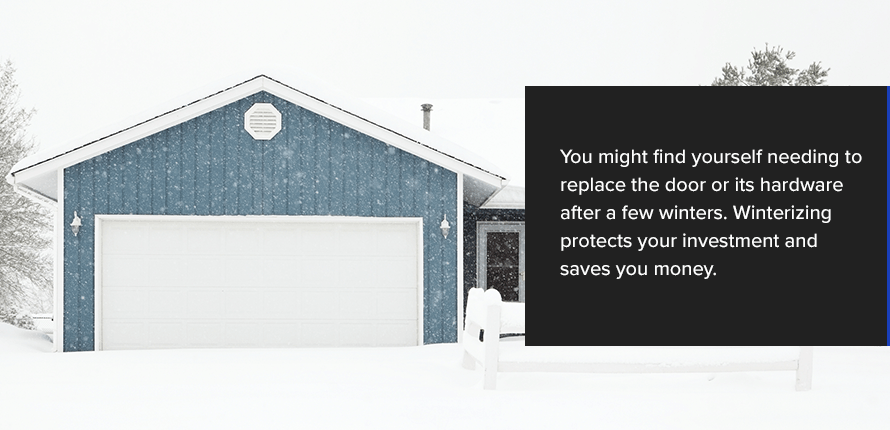
Why Winterize a Garage Door?
Preparing your garage for winter is vital to avoid ending up in an emergency situation with a door that refuses to move. A door stuck closed can be a serious dilemma — if your vehicle is trapped inside, you’ll have a hard time getting anywhere. If your vehicle is trapped outside, there’ll be nothing to protect it from the elements. And if your door is stuck open, everything in your garage will be exposed and you’ll have a tough time regulating the temperature. Even if your door functions without getting stuck, poor insulation can cause burst pipes and higher heating bills.
Winter weather will affect other elements of your garage in addition to the door. The cold can cause your pipes to freeze. The snow, ice and salt on your vehicle can erode your concrete floors. If shared walls are not well insulated, your heater will have to work harder, driving up your utility bills. An unprotected floor can also worsen insulation problems by creating cracks and gaps.
In addition to momentary inconvenience, the effects of winter can shorten the life span of your garage door. You might find yourself needing to replace the door or its hardware after a few winters. Winterizing protects your investment and saves you money.
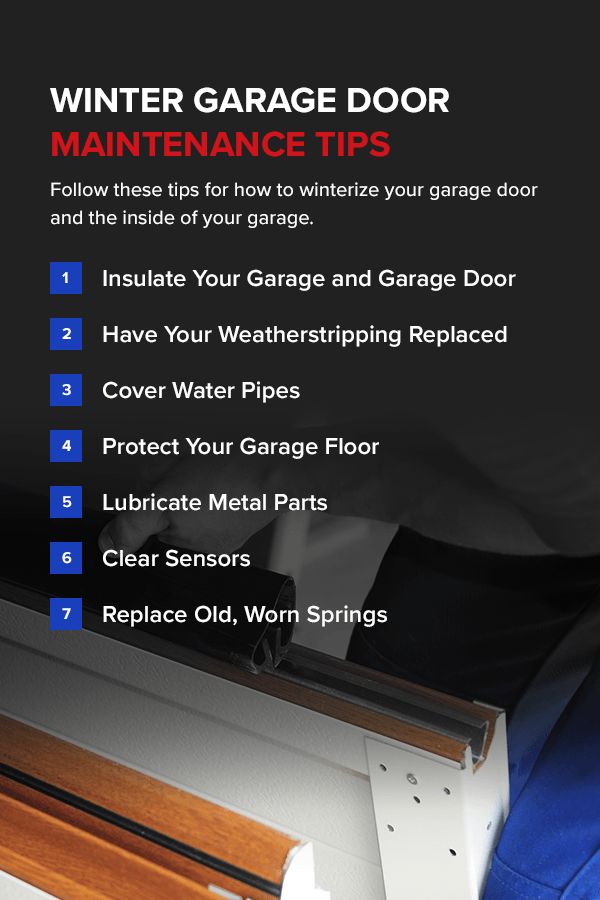
Winter Garage Door Maintenance Tips
As temperatures drop and the first snowfall looms, take some time to prepare your garage. Some tasks you can do on your own, while others may require professional service. You’ll find even the simplest preventive maintenance tasks can make a huge difference. Follow these tips for how to winterize your garage door and the inside of your garage.
1. Insulate Your Garage and Garage Door
It’s helpful to keep your garage warm during winter by installing proper insulation. You’ll find this has several benefits, including:
- It protects the internal hardware of your garage door.
- It protects the objects stored in your garage.
- It can lower your energy bills and improve the efficiency of your heating.
- It makes your garage a more livable, usable space during winter.
Many garages share at least one wall with a home or building, so proper insulation has a significant impact on indoor temperature regulation. At the least, you’ll want to improve the insulation of the shared wall to create a temperature barrier. If you’re thinking about upgrading or replacing your garage door, consider a well-insulated material. For instance, a four-layer garage door is ideal for extreme weather conditions.
Improved insulation is always beneficial, whether you only use your garage for storage or it has multiple purposes. If your home’s garage stays at a comfortable temperature, you can use it as a studio, home gym or children’s play area. In a business setting, you can make better use of a well-insulated garage. You can store valuable items or perform tasks in the garage.
2. Have Your Weatherstripping Replaced
You may notice tiny gaps along the edges of your garage door. It’s important to close these gaps with proper weatherstripping. Sealing door gaps in the winter will keep cold air, snow and ice from seeping into your garage and causing damage. Cracks along your garage door can also lead to pest issues, so these spots always need resealing. Professionals use polyvinyl chloride (PVC), vinyl or rubber to close off the gaps. They’ll also clear away any dirt or grime from the seal. Follow these garage door weather seal tips:
- Look for light: To check for cracks along the edge of the door, stand outside after dark and look for spots where light shines through. If you can see light, there’s a big enough space for temperature or moisture leaks.
- Use a bottom or threshold seal: If your garage floor has cracks or crevices where it meets the door, this can result in gaps. To fill those gaps, attach a strip of rubber or vinyl along the bottom edge of your garage door. You could also attach a threshold seal to the floor to serve the same purpose, but note that a threshold seal might make it harder to sweep or hose debris off your garage floor.
- Replace weatherstripping: Along the sides of the door, you’ll need to replace any worn weatherstripping, which attaches to the edges with nails or screws.
- Weatherstrip between panels: Gaps can also form between individual door panels. When that happens, apply weatherstripping along the borders of the panels.
3. Cover Water Pipes
When water pipes freeze, the built up pressure of running water can cause them to burst. A burst pipe can lead to dangerous and damaging flooding. Water pipes running through exterior walls, attics or garages are the most vulnerable. It’s important to insulate these pipes before temperatures fall too low.
If you choose to install insulation on your own, make sure to wrap all pipes in unheated spaces, for both cold and hot water. Use a pipe sleeve and wrap it tightly, leaving no room for sweating. You can also take the following precautions to avoid frozen or burst pipes:
- Keep a faucet dripping to avoid pressure buildup.
- Keep your thermostat on and heat running, even if you’re away for an extended period.
- Improve the insulation of your unheated spaces, including the garage.
4. Protect Your Garage Floor
Your garage floor withstands a lot in the winter, including vehicle and foot traffic, dirt, mud, automotive fluid, ice, rainwater, ground salt and sand. An unfinished concrete surface is more porous than you might realize. Like metal, concrete expands and contracts with the temperature. With exposure to moisture, it’ll freeze and thaw. This results in cracking, crumbling or flaking.
The sand and salt that are meant to improve traction on the road are abrasive to your floor. To avoid these issues, you can take a few precautions. Choose from any of the following methods, noting their pros and cons:
- Applying protective coatings: A protective coating of epoxy or polyaspartic will protect your floor and improve its appearance. Keep in mind that you have to apply epoxy in mild temperatures. If you wait too long into the season, epoxy is no longer an option.
- Applying clear sealants: Sealants offer a clear film to protect against damage. If the floor underneath has uneven coloration or surface damage, those issues will still be visible.
- Laying down snow mats: A cost-effective way to protect your garage floor is to lay down snow mats. A rubber or vinyl snow mat will provide a protective barrier between your concrete floor and the snow, ice and salt. They’re an impermanent solution as they can come loose, tear or fray over time.
- Installing interlocking tiles: Another inexpensive option is to install rubber or PVC interlocking tiles. If you use tiles, create a drainage system for the water that collects on the surface.
In general, try to keep your garage floors as dry as possible. If you can, clean snow off your vehicle in the driveway before pulling into the garage. Use a shovel and a squeegee to remove snow and ice from the floor. Regular cleaning throughout the winter will reduce the burden on your floors.
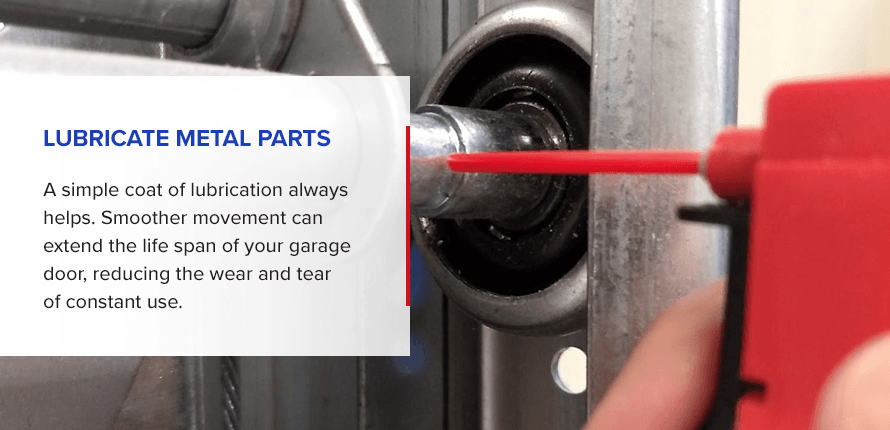
5. Lubricate Metal Parts
Spray lubricant on all your garage door’s moving metal parts, like springs, bearings and hinges. This is an easy do-it-yourself project that can make a huge difference. You can use standard engine oil, but avoid thick grease. If it’s too thick, it’ll make tracks stick and collect debris. When you apply the spray, work around plastic pieces. Afterward, wipe away excess lubricant to keep it from dripping on the floor.
A simple coat of lubrication always helps. Smoother movement can extend the life span of your garage door, reducing the wear and tear of constant use. While you should apply lubricant before winter, you can also apply it any time of year. To see if your garage door needs lubrication, watch as it opens or closes. See if it sticks or struggles at any point. If it does, apply lubricant.
6. Clear Sensors
As mentioned above, winter fog can inhibit your door’s safety sensors. These safety sensors are a vital element of your garage door. Garage doors are heavy and can cause severe injury if someone gets caught underneath. Photo eye sensors keep this from happening, stopping the door when there’s an obstacle.
If your door refuses to open or close, a blocked sensor may be the cause. Thankfully, this is easy to fix. Wipe the photo eye sensors so they can operate as they should. You’ll also want to clear away leaves, dirt, dust and snow from the lenses. Keep the area around the base of the door unobstructed, and shovel away snow and dirt.
7. Replace Old, Worn Springs
The metal hardware on your door needs to be strong when winter comes around. Worn metal components can compromise your door’s ability to function. Before winter, you might want to have a professional replace your springs. Grinding or squeaking sounds or stuttered movement might indicate an issue with your springs. First, carefully apply lubricant. If the issue persists, contact a professional service to replace the broken springs.
What to Do if Your Garage Door Is Not Working
Whether or not you’ve taken necessary precautions, emergencies can happen. In some situations, you need an immediate fix and waiting several days is not an option. For example, if your door is unable to close, everything in your garage is vulnerable to the elements. In a scenario like this, contact a 24/7 emergency repair service. An on-call technician will arrive to address the issue so you can continue your regular activities.
Contact American Overhead Doors for Garage Door Service and Repairs
When preparing your home or business for the harsh Connecticut winter, it’s important to remember the garage. Your garage has to withstand heavy use in all climates, rain or shine. At American Overhead Doors, we provide professional garage door service, repair and replacement for homes and businesses to prepare you for any season. Whether you’re looking for preventive maintenance, part replacement or emergency response, we can help. For all your garage door needs, contact American Overhead Doors today.
An Article on Professional Garage Door Installation Versus the DIY Market
Check out this great article on professional garage door installation versus the DIY market!
Tips for Garage Door Safety Month 2020
It’s June, which means it’s Garage Door Safety Month! Here’s a friendly reminder to ensure that you and your family maintain a safe home environment. Your garage door may not seem like the biggest threat, but many individuals are hurt by garage door malfunctions each year. Fortunately, you can help prevent these accidents. Start by taking a look at these garage door safety tips.
1. Check Door Balance
Your garage door should move up and down with ease when it’s balanced. If you neglect its maintenance, however, it can become unbalanced. You’ll notice this problem if your garage door seems unevenly weighted. You can test your theory and determine a solution with a few tricks. It’s smart to conduct this check every few months to stay safe.
Turn off your garage door’s opener. Then, slide it up and down the tracks a few times to see if it glides smoothly. Let go at a certain point to see if the door stays put. If it moves, you’ll know there’s a balance problem. You may need to replace your garage door’s springs — it’s best to contact a professional for this project.
2. Look for Wear
You should check your garage door for wear and tear. All garage doors endure damage over time, especially when it comes to severe weather. If yours has cracks or dents, it likely doesn’t function as it should. Plus, any moisture buildup can lead to mildew and rot. It’s more common for wooden doors to take on water-related decay, but you should make time to check for these issues no matter your door’s material.
You can use a flashlight to illuminate your garage door’s cracks and crevices. If you notice any prominent damage that may affect your door’s performance, you should have an expert take a look.
3. Test Door Sensors
Your automatic garage door can prevent injuries, but only when it works correctly. A garage door that comes with sensors and functions properly can sense when there’s an object around or underneath it. It won’t close unless the item moves. However, if the sensors are damaged, missing or misaligned, your garage door could shut abruptly even if there’s an obstruction. Your sensors can help you avoid such risks.
Look at your garage door’s sensors to see if there’s an LED light. Do you notice any blinking? If you do, it’s time to readjust them. You can use a screwdriver to secure the bracket around the sensor. Once it’s secured, the sensor should be ready to work correctly.
4. Consider a Tuneup
How do you keep your garage door safe and operating as intended? An annual garage door tuneup can answer this question. A professional can inspect your door to ensure that it works properly. They’ll check hardware and cables to make sure every component is secure. An expert can also replace different parts that could’ve worn down over time. Opting for regular tuneups is one of the best steps for keeping a garage and garage door system safe.
Contact a Garage Door Specialist at American Overhead Doors, Inc.
If you want to ensure that your garage door works reliably, contact us at American Overhead Doors, Inc. today. Our garage door specialists can conduct a check and provide specific recommendations that enhance your safety. Whether you need a spring replacement or a new garage door entirely, we’re here to provide reliable service for anyone in the state of Connecticut.
Guide to Buying an Insulated Garage Door in Connecticut
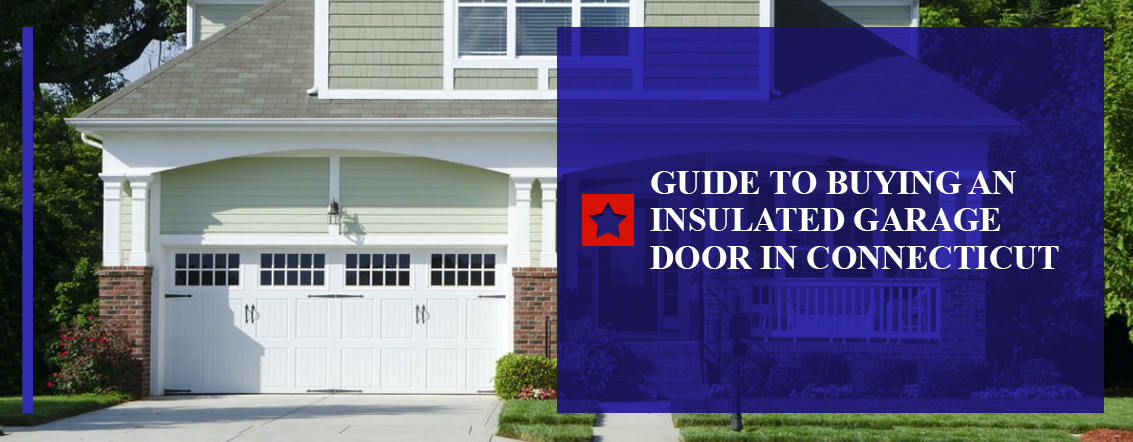
Let’s face it — Connecticut weather is unpredictable. Especially in the spring and autumn months, outdoor temperatures can spike or drop in a heartbeat. With an insulated garage door, you can always be sure you’re pulling in to a comfortable garage, no matter the season. An insulated garage door has many benefits that make it worth the cost. There’s also a lot that goes into choosing the right one for your Connecticut home, which is why we’ve put together this insulated garage door buying guide.
Browse Our Garage Door Inventory
Benefits of an Insulated Garage Door
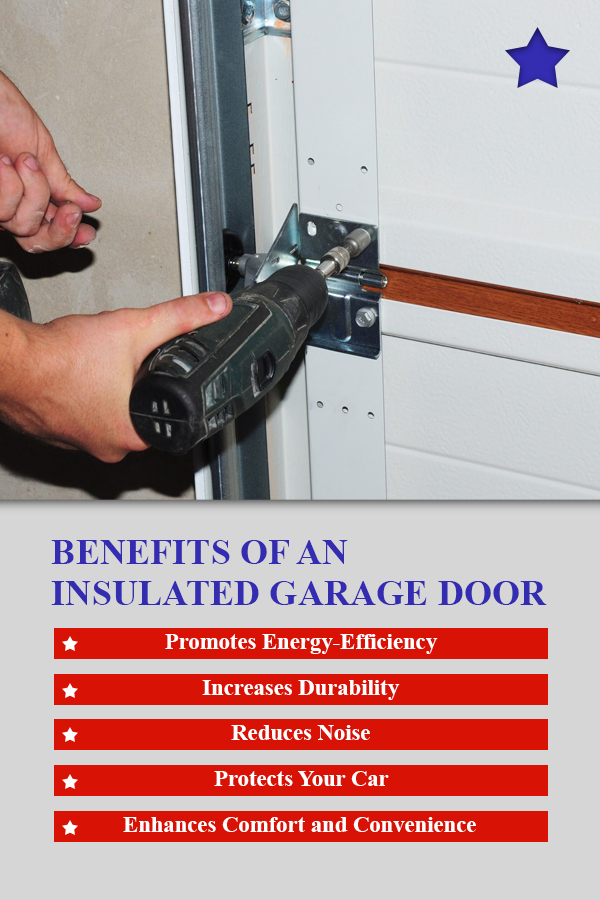
Does an insulated garage door make a difference? Yes.
An insulated garage door is energy-efficient, convenient and comfortable. Insulation helps you better protect your garage door, and creates better conditions for both your car and anything else you store in your garage. The door itself may give your home more peace and quiet and can increase your curb appeal. All these benefits make an insulated garage door a fantastic investment.
1. Promotes Energy-Efficiency
Your home’s walls, ceilings, windows, floors and doors all create what’s called a “home envelope.” The barriers that keep the extremes outside allow you to heat and cool your home throughout the year. The more energy-efficient your home envelope — the better its insulation and the less it leaks air — the more money you’ll save.
The garage door is the largest entry point to your home and an often overlooked section of your home envelope. Part of the reason for this is that garages aren’t usually considered living spaces, so they have different construction standards. Any garage attached to the rest of your house shares at least one wall with another room. You might even have a bedroom directly above the garage.
So, even if you’re not piping heat into your garage, your home is still losing warmth. As warm air seeps in through a non-insulated garage door and into the outside world, your heating system works harder to compensate. Likewise, in the summer, your air conditioning quickly escapes through your garage door.
An insulated door keeps warm air in during cold weather and heat and humidity out during warm weather. According to one study, a garage with a non-insulated metal door will be about 30 degrees on a 20-degree winter day. On the same day in a garage with an insulated door, the temperature will be around 42 degrees. With one below freezing and the other above, an insulated door can make a huge difference in how you heat your home and help you cut down your energy bill, too.
2. Increases Durability
Over the years, garage doors take quite the beating. With regular use, the bottom panel of the door is making contact with a concrete slab many times a day. It might also be the victim of your kids’ backyard sporting events or take some flak from airborne pebbles on a windy fall day. Dents on your garage door can affect your home’s curb appeal. It’s crucial to look for a sturdy garage door that can withstand daily wear and tear.
Insulation adds extra rigidity to a garage door, which results in more durability. Many insulated garage doors have a solid panel of insulation sandwiched between two layers of steel or aluminum. Others are injected with foam that expands as it hardens, filling the space between the metal panels. Both of these types of insulation make a garage far less susceptible to dents.
The internal hardware of your garage also fairs better thanks to the milder internal temperature in your garage. Extreme temperatures can affect springs as well as the lubrication of rollers and hinges. A machine-operated garage door opener will also have a longer lifespan when it’s not exposed to cold temperatures or high heat.
3. Reduces Noise
If you work early or late hours, you might be concerned about waking your family with the sound of your garage door opening and closing. Garage doors have a lot of moving parts, and with anything that moves, some noise is expected. When the sound suddenly becomes bothersome, the first step should be to check the hardware. Worn out rollers can cause grinding, while a loose chain or track can produce a jerking sound.
If there is no direct problem causing the noise, however, the door itself could produce an annoying sound. A lightweight non-insulated garage door tends to be the biggest offender. Panels may shake as they move along the track, causing a rumbling sound. Insulation can absorb vibration and dampen noise, which is a major plus if you choose to upgrade to insulated doors. Also, their thick insulation and tight construction nearly eliminate hollow space and loose material inside your garage door panels, which also limits noise.
An insulated garage door can also create a quieter environment, even when the door is not in use. Just as an insulated door serves as a defensive barrier against the elements, it also stops soundwaves in their tracks. Anything from a car speeding by or a leaf blower buzzing to a dog barking can disturb your home. While you won’t wholly sound-proof your home by insulating your garage door, the extra padding helps muffle these sounds.
4. Protects Your Car
The whole reason we have garages in the first place is to shelter your car from the elements. A garage protects your car from ice and snow in the winter and shades it from the harsh summer sun. When the temperature in the garage is not much different from the outdoors, your car may still be suffering.
Winter is tough on car batteries because the oil starts to thicken and makes it more difficult for the engine to turn over. Cold weather can also prevent your battery from recharging properly. When a car is parked in a cold garage, the tire pressure will go down. A warm, comfortable garage can improve the life of your car and keep its parts working like they are supposed to.
5. Enhances Comfort and Convenience
The easiest way to make a garage warmer — without racking up a higher heating bill — is to insulate your garage door. How much warmer is an insulated garage door? One homeowner with a Clopay® garage door saw amazing results from the Intellicore® insulation system. Before the new door, the average temperature inside the garage was an average of 21 degrees warmer than the outside temperature. With the insulated garage door, the average temperature saw an average of 49 degrees above the outside temperature.
On days when the temperature drops below freezing, stepping out of your car into a toasty garage can make a big difference. You’ll feel more comfortable and endure less cold before and after your daily commute. As you transport groceries to the kitchen and get your kids in and out of the house on chilly days, you’ll appreciate the convenience of a warmer garage.
The added warmth also creates a vestibule effect. Many restaurants use a vestibule to cut out the blast of cold air that enters the room when the front door opens. Likewise, your garage is essentially a vestibule for your home. When the temperature in your garage isn’t much warmer than it is outside, you might send a wave of cold air indoors whenever you enter your home. An insulated garage door can make the living areas near your garage more comfortable.
You also might treat your garage as an extension of your living space. You might use the area as a workout room or work on your DIY projects. Some people work with power tools in the garage, while others use the space as a game room outfitted with a pool table. If you do a lot in your garage, you’ll appreciate the extra warmth and prolonged use time an insulated garage door can provide.
Types of Garage Door Insulation
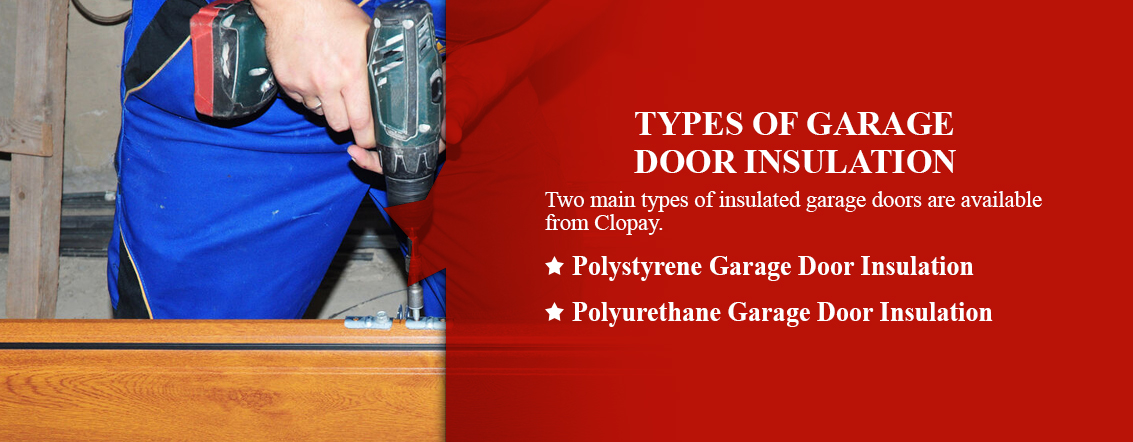
Two main types of insulated garage doors are available from Clopay. Some of their models are available with polystyrene insulation, while others use Clopay’s proprietary Intellicore® Polyurethane Insulation. A selection of garage doors, including the Coachman, Grand Harbor, Gallery and Modern Steel collections, allow you to select from either form of insulation. Both types offer some unique advantages:
Polystyrene Garage Door Insulation
Garage doors insulated with polystyrene are called double-layer doors. Polystyrene is the same material you’ll find in an aftermarket garage door insulation kit. Polystyrene comes in thick rigid panels which would be inserted between the steel or aluminum panels of your garage door. The main advantage of a polystyrene insulated garage door is that it costs less. It will do far more to protect your garage than a single-layer door, and you’ll get the same advantages of increased durability, sound dampening and a better indoor climate.
Polyurethane Garage Door Insulation
The best insulated garage doors are made from Polyurethane. Polyurethane insulated garage doors are called triple-layer doors and have increased insulating power. It’s a highly energy-efficient material comprised of polyurethane foam. This foam is injected between the outer layers of your garage door. The foam then expands to fill the entire garage door, making it almost completely solid. It bonds to the steel surface, making the door more durable and less prone to dents. It also provides the best climate control and superior sound isolation.
Insulated Garage Door R-Value Explained
If you begin shopping for an insulated garage door, you’ll probably notice that each one has an R-value listed in the description. R-value is a measurement used to understand a garage door’s insulating abilities. Technically, an R-value represents the ability to slow the transmission of heat. The higher the R-value, the slower the transfer of heat, and the better the insulation. A high R-value slows the heat leaving your house in the winter and the heat radiating from the sun in the summer.
It can be helpful to look at the R-value of the rest of your house to see how your garage stacks up. The International Code Council provides minimum recommendations for R-values in a home within different climate zones. Connecticut is in Climate Zone Five, where they recommend that a ceiling have an R-value of at least 38. A wall should have insulation with an R-value starting at 13 or 20, depending on the type of wall and the way insulation is placed.
When you look at Clopay’s garage doors, you’ll notice they have R-values ranging from 6.3 to 20.4. When you consider the size of your garage door, you should treat it almost as if it’s another wall of your home. If you live in places with lots of weather fluctuation and have an attached garage, you should insulate your garage door.
That’s why we recommend an R-value of at least 14 for garage doors in Connecticut. Here in the northeast, we see a huge fluctuation in temperatures. We can easily have subzero temperatures in the winter and 101-degree weather in the summer.
Our extreme New England weather patterns call for plenty of padding throughout your entire home envelope, and your garage is no exception. If your garage shares a wall with the main living space or sits below a bedroom, it’s essential to have a high R-value. If you spend a lot of time in your garage or use it as another living area, we recommend an R-value of at least 16 for your insulated garage door.
Are Insulated Garage Doors Worth It?
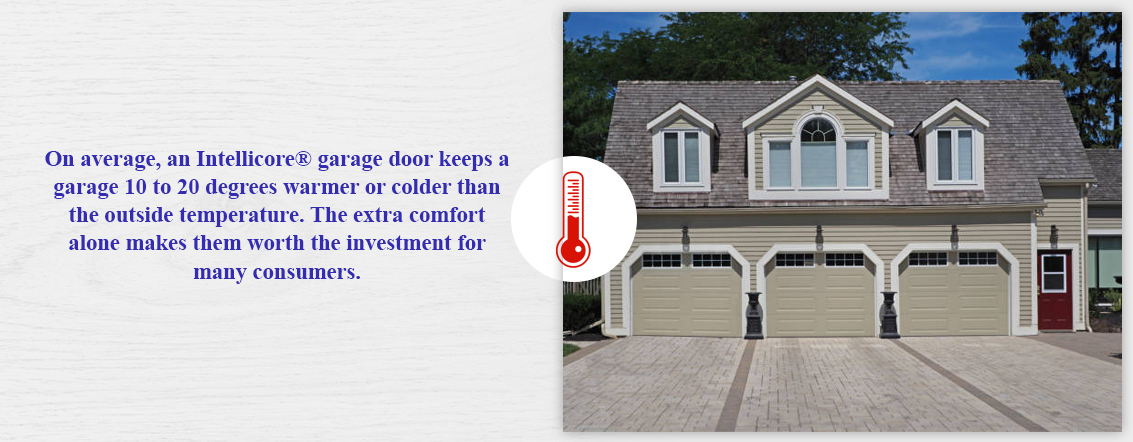
How much an insulated garage door costs depends on several factors. The size of your door frame, the model you select and the type of insulation you want will all influence the price you pay. In general, buying a garage door is an excellent investment for your home. A recent study found that homeowners recoup 98.3 percent of their garage door cost after selling. An upscale garage door can even recoup more than 100 percent of its original value.
When you opt for an insulated garage door, you get an attractive entry that will resist damage for years. If you plan on selling your home, the added curb appeal can add to the value of your home. With an insulated garage door, you also get the added value of energy efficiency, which can lead to significant savings over time. Clopay’s Intellicore® Polyurethane insulation is energy-efficient, helping you cut heating and cooling costs.
On average, an Intellicore® garage door keeps a garage 10 to 20 degrees warmer or colder than the outside temperature. The extra comfort alone makes them worth the investment for many consumers. For temperature-sensitive items in your garage, an insulated garage door can preserve their lifespan. Clopay’s Intellicore® doors are some of the best insulated garage doors in Connecticut.
Furthermore, data demonstrates the sound-isolating power of its proprietary insulation material. Clopay engineers compared the sound of a basketball bouncing off a garage door on an insulated versus uninsulated garage door. They found that their Intellicore® door outperformed other models. While a basketball hitting a non-insulated garage door will produce 96 decibels, the same basketball hitting an insulated door makes only 80 decibels. Since decibels are logarithmic, the Intellicore® garage door sounds approximately three times quieter.
Insulate Your Home With American Overhead Doors
If you’re looking to replace your garage door with a beautiful and energy-efficient insulated garage door, come to American Overhead Doors, Inc. We have a vast selection of Clopay garage doors, with many insulation options and R-values to choose from. Upgrade your home and get your garage ready for any weather Connecticut throws your way with an insulated garage door from American Overhead Doors.
Are you ready to start shopping? Browse our collection of Clopay garage doors and even see how the door will look on your house with our Clopay Door Imagination System. When you’ve found the insulated garage door to complete your home, request an estimate to receive prices.
DIY Garage Organization Tips and Tricks
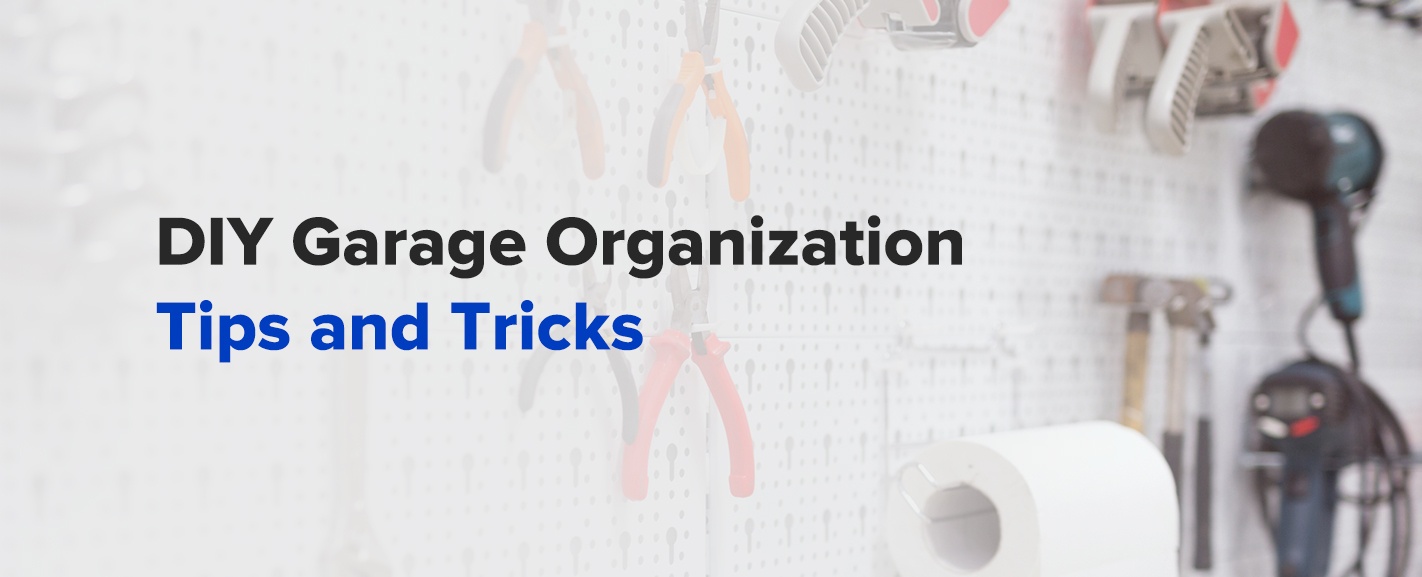
Clutter can pile up in the garage if you’re not careful. Go through the treasures in your possession and get some new garage storage. You can organize this area of the home using the free space on your floor, walls and ceilings.
Do you want to use your garage to protect your car from harsh weather, but accumulated junk forces you to park in the street? Use this guide to discover some brilliant garage organization tips.
How to Start Organizing Your Garage
To help you organize your garage, make a checklist. Here are some garage organization plans to consider. Make sure you have these items on hand before you start your cleaning project:
- Vacuum, mop or broom
- Trash bags
- Baskets or cardboard boxes
1. Schedule Time
Be realistic about how long this project is going to take you. Organizing the garage takes the average person about a day. The project may take longer, depending on the weather or family obligations.
Take out your calendar and find a day you’re available to start organizing your garage. Look at the next couple of steps and figure out how long it’ll take you to complete each task. Knock out the cleaning project on a sunny spring day, or spread it out over a couple of weeks.
2. Sort Your Clutter Into Piles
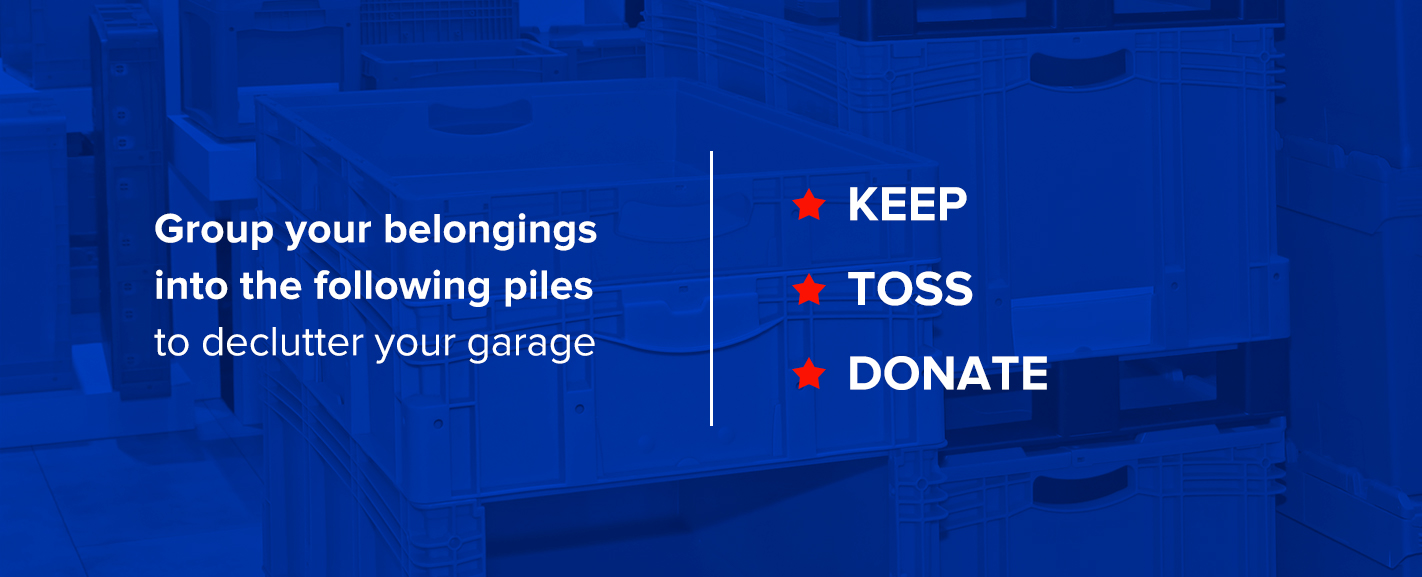
Clear all your possessions out of the garage and put them in a visible area. Grouping your belongings into the following piles is how to declutter your garage.
- Keep: Store these items in temporary boxes until you know where you want to make their forever home.
- Toss: Throw out these items in trash bags for garbage day.
- Donate: If your items are in good condition, but you have no use for them, consider donating them to a local charity.
As you examine each item, think about how often you use them. Sort your things in categories, like sporting equipment or tools. You should donate or get rid of items that don’t fit in a group and don’t serve a purpose in your home.
If you’re not sure about keeping or tossing an item, put it to the side and work on the rest of the pile. After a couple of hours, go through the heap again and decide what to do with those miscellaneous items.
3. Organize Your Garage Into Zones
Split your garage into different categories and put things in their respective places. Each of the items in your garage needs a special place to call home. That way, after you use something, you can put it back where it belongs.
How to arrange your garage depends on what works for you and your family. You could use any of the following categories to decide where to put your possessions:
- Car supplies
- Recyclables
- Sports equipment
- Tools
- Children’s toys
The items you use the most should be in accessible places. Put the recyclables by the garage door and bring them outside. Keep things that could be harmful to your children or pets in high places they can’t reach.
Organizing your garage in zones also helps your family find their belongings. You know where you put everything, but other members of your household should be able to find them even when you’re not around. Creating space for each item in your garage will make it easier to find and put back their possessions.
4. Brainstorm Storage Options
You could use different types of DIY garage storage to put away your stuff. Use storage space that’s easy for you to access when you need the items in your garage. Here are some ideas to get organized.
- Plastic storage boxes: Instead of flimsy cardboard boxes, uses plastic boxes for permanent storage. Waterproof plastic containers are easy to transport and protect your belongings better.
- Labels: If you use plastic bins or drawers, group all similar items together in the same storage unit. Have a permanent marker and white masking tape ready for labeling your possessions.
- Shelves: Install shelves to keep items off the floor. Shelves also help you see and access your possessions.
- Built-in cabinets: Take advantage of wall space with cupboards. You could put items you don’t use every day in these storage units. Lock tools or harsh chemicals out of reach, away from pets and small children in your household.
5. Keep the Garage Clean
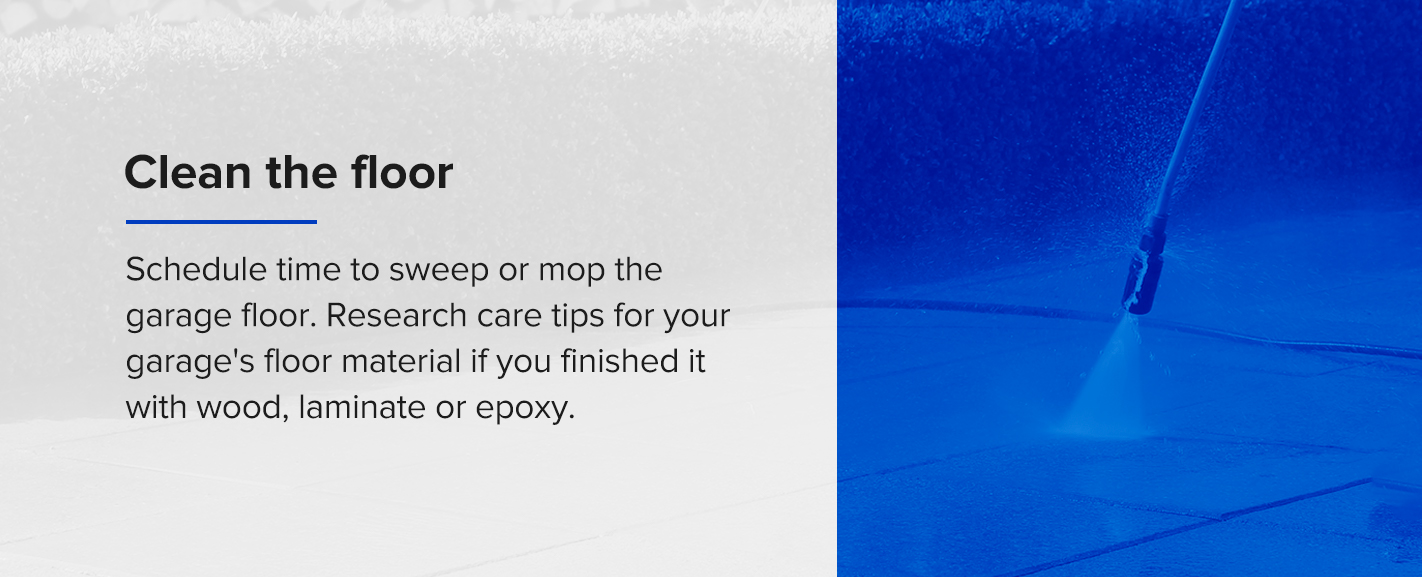
After you’ve done a sweep of your garage, you should keep it clean. You’ll be able to maintain your garage better when you do a quick clean once a week. Now that you’ve removed the excess clutter, it’ll be easier to maintain.
Here is how to keep your garage clean.
- Put your car in it: When you park your vehicle in the garage, you’ll have less space for clutter. Make a habit of parking in your garage, so you don’t throw other items in that space.
- Clean the floor: Schedule time to sweep or mop the garage floor. If you have an unfinished concrete garage floor, use a mop to clean the floor. Research care tips for your garage’s floor material if you finished it with wood, laminate or epoxy.
- Put items away after you use them: Now that you have a designated space for all the items in your garage, you have to put them back where they belong after you use them. There’s no excuse for leaving things on the floor or in front of the entry door.
Space-Saving Garage Storage Ideas
As you figure out where to store the items in your garage, put your car in the space. Measure the area around your vehicle to find out how much free space there is for storage. Here are some DIY garage storage ideas.
1. Use Plastic Bins and Containers
Plastic bins help you store your items in different categories. Keep your stuff out of the way with these clever garage storage ideas.
- Opaque storage bins for privacy: Colorful plastic storage bins help you hide items you’d rather keep out of sight, like sports equipment or seasonal clothes. Remember, guests may peek into your garage on the way into your house, so this space should be tidy. Opaque bins keep your valuable possessions out of reach from nosy neighbors.
- Floor-to-ceiling plastic bins: Use clear plastic containers to see what’s inside them at a glance. Organize them on shelves by category or family member. Sturdy plastic bins will protect your possessions from moisture and heat damage.
- Labels: Sticker tags help you know what’s inside your bins. Labeling your containers allows your family members to know where to return things when they’ve finished using them. You could use sticker labels or create labels out of vinyl adhesive with a cutting machine.
- Open baskets: Use baskets without lids to store items that you need to access more often. Narrow bins serve as a great place to store trash bags. Put these baskets on the floor or a low shelf so you can reach them.
2. Take Advantage of Vertical Wall Space
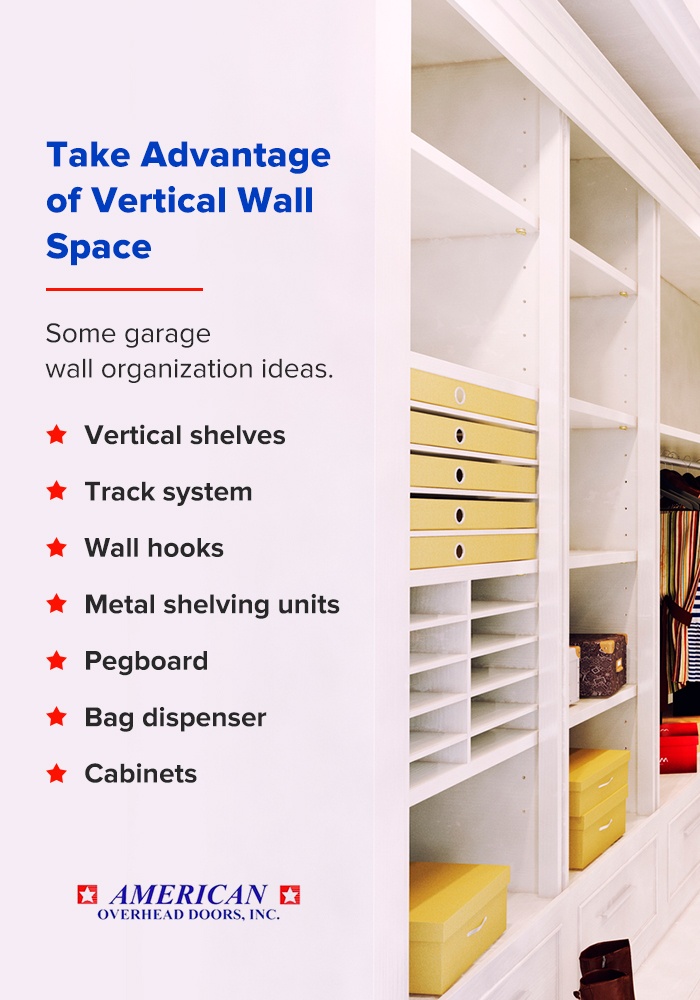
Instead of having all your items on the floor, use the wall space in your garage for extra storage. Here are some garage wall organization ideas.
- Vertical shelves: Install shelves to use as much vertical wall space as possible. You can put wall shelves at any height. Choose from plastic, wood or metal shelving, depending on much weight you need them to hold. Check the instructions from the manufacturer before installing them.
- Track system: A bar along your wall can hold hooks or shelves. You could store rakes, tools or buckets with these versatile systems. Use a track system for items with awkward shapes like landscaping equipment. Track systems can accommodate most of your garage door storage ideas to maximize all the wall space in your garage.
- Wall hooks: Use wall hooks to store bulky items, so they’re not on the floor. Hooks don’t take up a lot of room on your wall, so you have space for more storage. You could store a bicycle on a wall hook.
- Metal shelving units: If you have concrete walls, use metal shelving units in place of wall shelves. Push these shelves against the wall to leave space on your floor for your car and other items. Metal shelving units can withstand the extreme temperatures of uninsulated garages. They’re also sturdy enough to hold heavy weight.
- Pegboard: Install a pegboard on your wall to hang anything you like. This unit is a great place to organize your tools so you can see them all at once. Pegboards are handy for cleaning supplies and other lightweight items.
- Bag dispenser: Mount a bag dispenser on the wall to keep track of old shopping bags. Most bag dispensers stick right onto the wall without needing any extra equipment.
- Cabinets: Mount cabinets onto the wall to store items you don’t use every day. Make sure to lock products with harmful chemicals in these cabinets if you have small children.
3. Add Ceiling Storage
If you run out of floor and wall storage, install any of these garage storage solutions onto your ceiling.
- Ceiling ladder lift: Instead of leaning your ladder against the wall, create a lift mounted from the ceiling. Organize your garage in such a way that it’s easy to access when you need it.
- Overhead storage racks: If you’ve used all the storage space on your floors and walls, consider building up. Easy-to-install metal storage racks can hold hundreds of pounds. Make sure to allow enough space for your garage door and garage door opener. You could store seasonal items or luggage in these storage racks.
- Storage pulley system: A storage pulley system gives you access to bins in high places without the need for a ladder. You could use a pulley system to store items that you want out of sight, but that you need to access more often. Consider using this system for gardening equipment or seasonal decorations.
- Overhead loft: You could use the extra space from your high ceiling by creating an overhead loft. Make sure you have enough clearance for your car to store items you don’t need to use as much, like camping equipment.
Unique Garage Organization Tips and Tricks
Since you’re doing this yourself, you have more flexibility with what you use to store your items. Here are some exciting, one-of-a-kind ways to save the items in your garage.
- Store your bike with a hook or pulley system: You could install a hook on the ceiling or wall for flexible space for your bike. You could also use a pulley system to bring the bike to the ground for easy transport.
- Use magnetic storage: Metallic shelves, tracks or cabinets can be home to small items like tools to put them in a visible location.
- Merge like items: You should group similar things to save space. If you’ve bought several boxes of nails, buy one storage container for all of them.
- Create a drop-off zone: At the end of a long day, it’s easy to throw your stuff on the couch or living room floor. If your kids play sports or you often work in the yard, create a place to dump your stuff when you’re tired. Make sure to put the items away when you’re ready so that you could avoid making a mess in your garage again.
Adding Finishing Touches to Your Organized Garage
When you’ve organized your garage, consider what you could do to enhance its appearance even more. You may notice some paint chips on the wall or some scuff marks on the floors. Think about how you want to use your garage. Is it where you park your car or a place to work out in the morning?
Here are some finishing touches on how to clean up your garage.
- Deep clean: When deep-cleaning your garage, wear gloves in case you come across any bugs or harmful chemicals. Dust the garage from top to bottom, starting with the ceiling and ending with the floor. Wipe the walls and doors with warm water and mild detergent. Mop the floor or hose it off, allowing a couple of hours for it to dry.
- Flooring: Look at your garage and figure out how you want to use this new space. If you don’t have much extra room to spare in your house, the garage could be a great place to set up a gym or an office. To create a more inviting place, add an area rug to the garage. If you’re going to use it as a home for your car, you could leave the floors bare. Most garage floors only need an epoxy finish to restore their shine.
- Repair or replace the garage door: Your garage door has taken some hits over the years. If you’ve had issues with opening your garage door, consider getting it repaired. If you’ve had your garage for a while, you should upgrade to a new garage door and garage door opener.
Finish Your Garage With a New Garage Door From American Overhead Door in Connecticut
A sturdy garage door can protect your clean garage. As a Clopay Master Authorized Dealer, we specialize in providing high-quality garage doors in Connecticut. Browse through our collection of residential garage doors to upgrade your living space. You should also get a new LiftMaster garage door opener to go with your new door. For more information, give us a call at 860-347-1507 or contact us online.
Signs Your Garage Door Needs Repairs
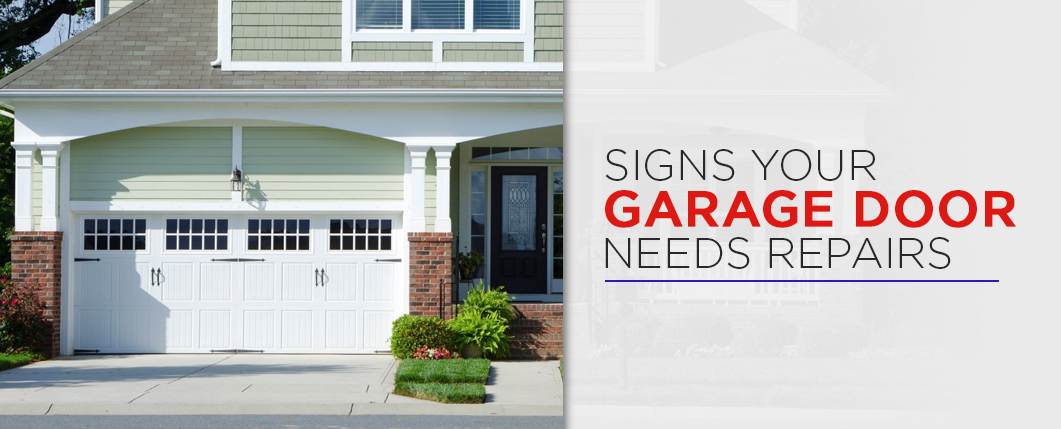
Garage doors are a vital component of every home — they protect our cars and homes while boosting curb appeal. However, despite using garage doors every day, we almost never dedicate any time to examining their condition — unless, of course, something goes wrong. In this article, we’ll discuss some symptoms that commonly indicate when you should have your door repaired. (more…)


